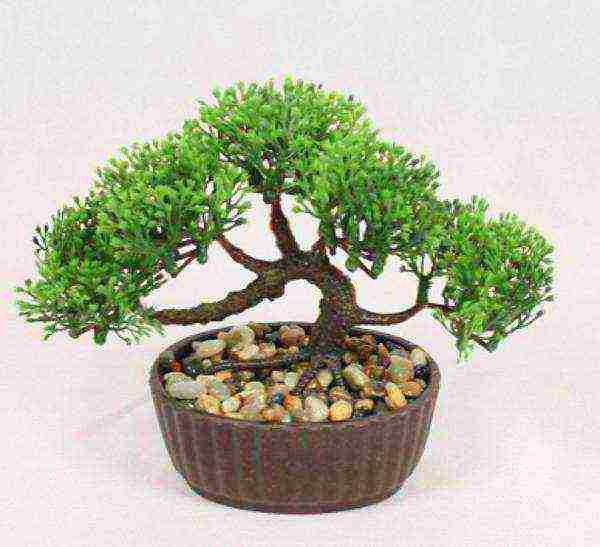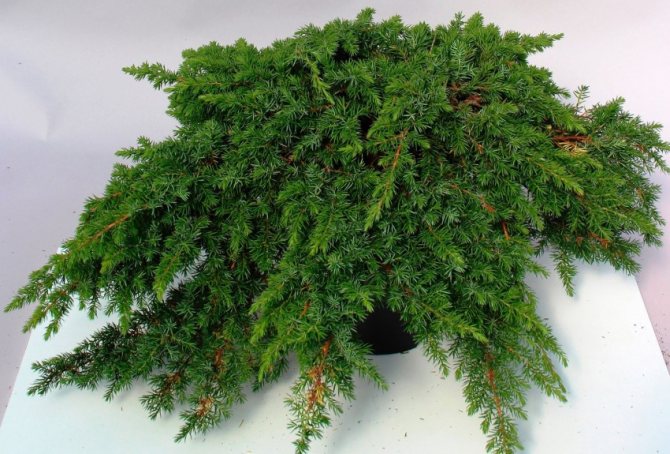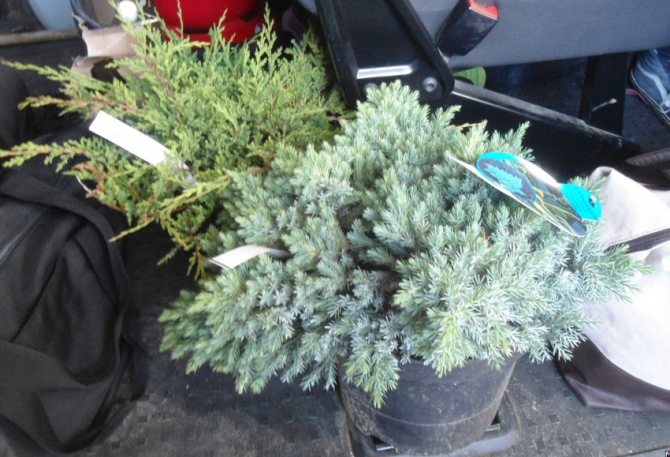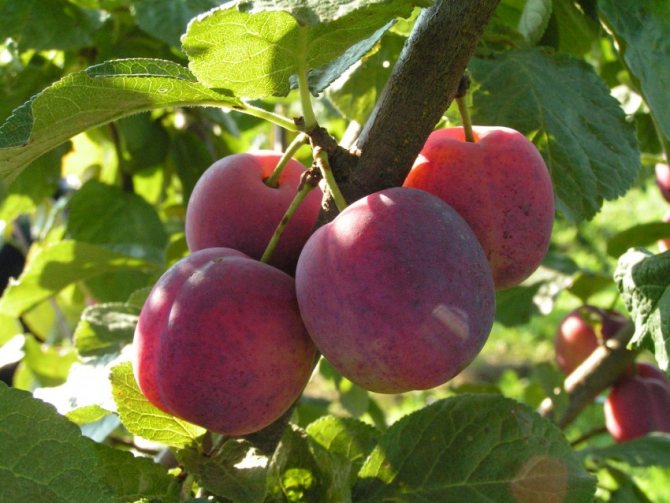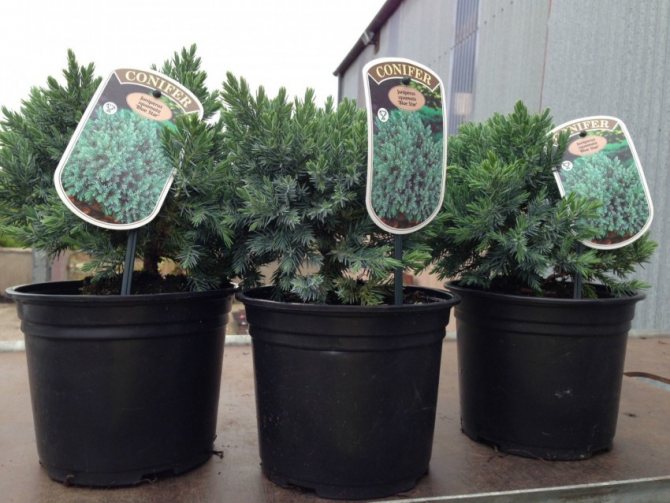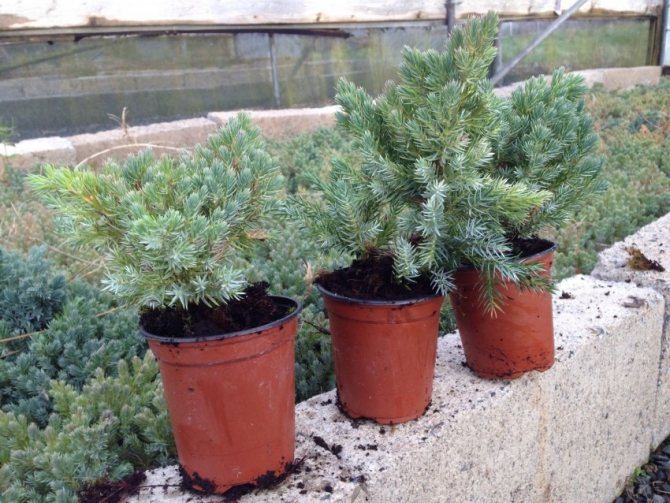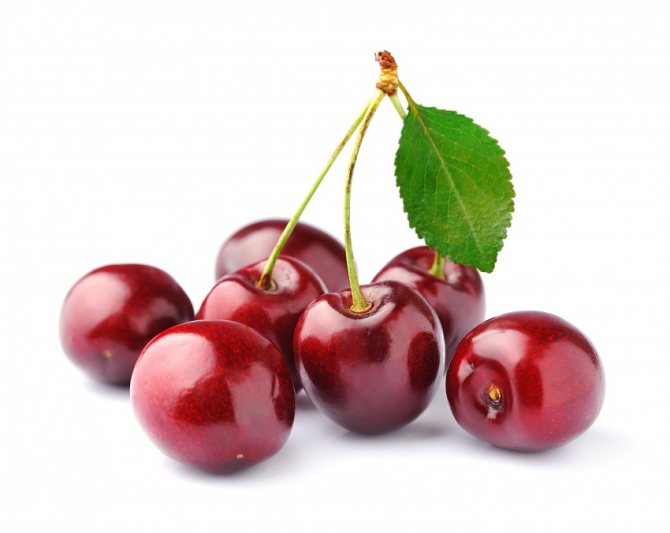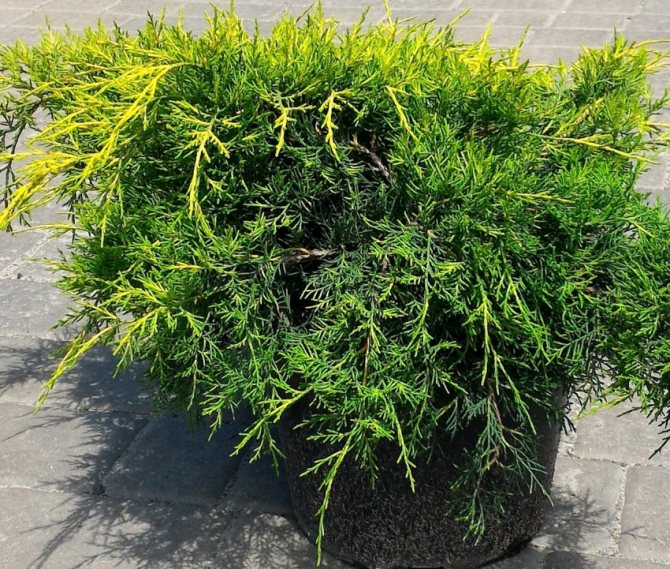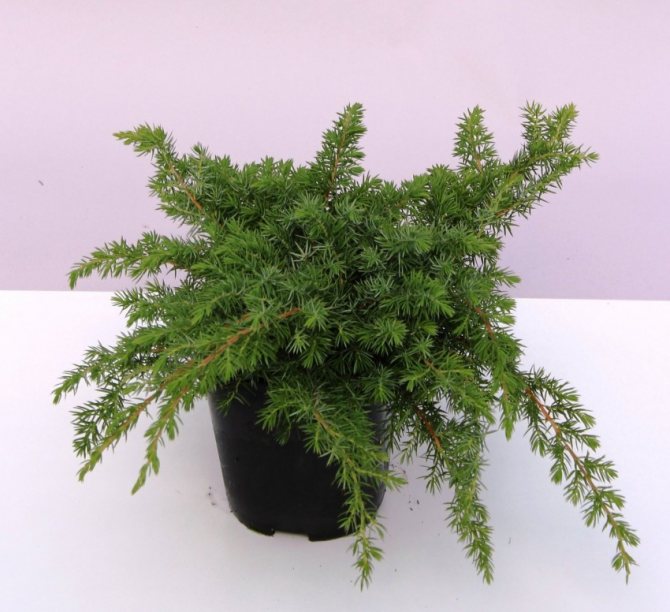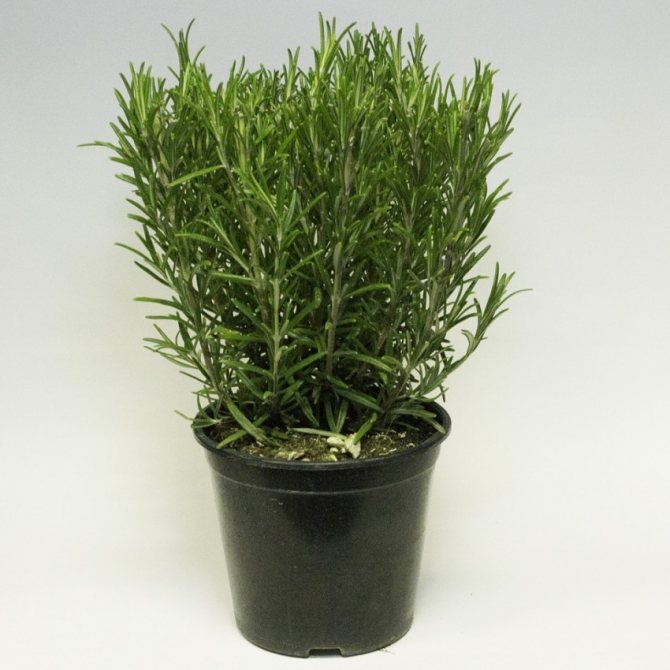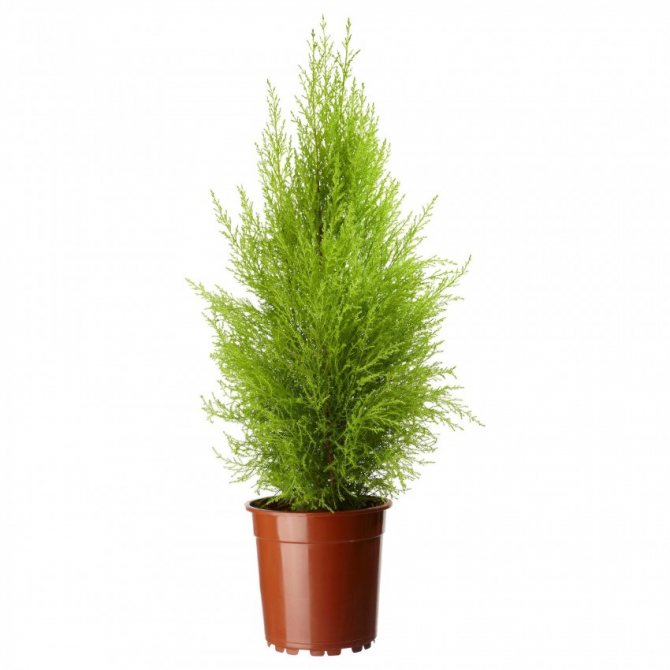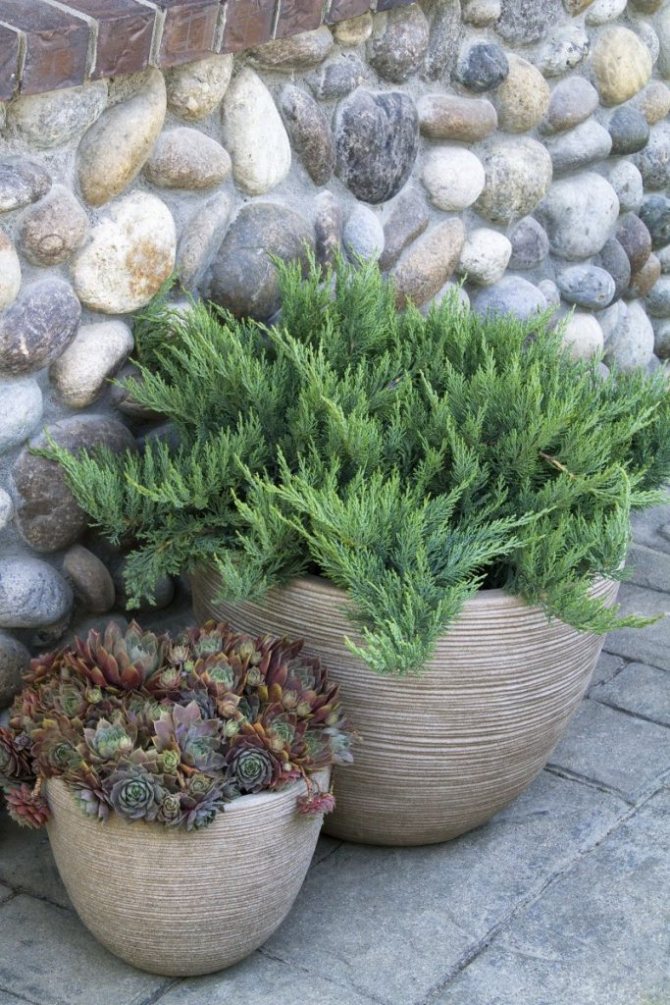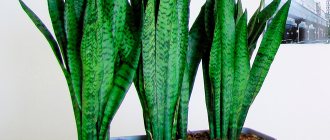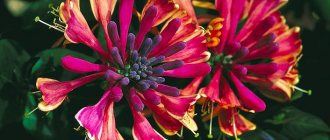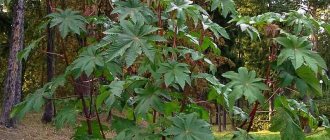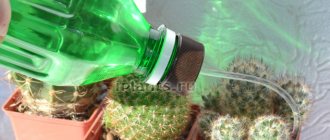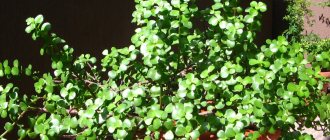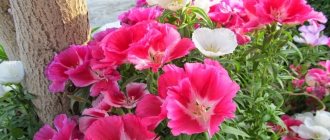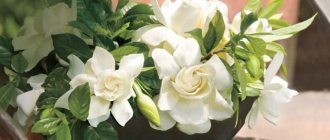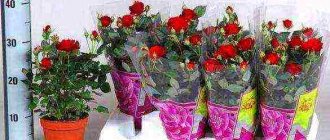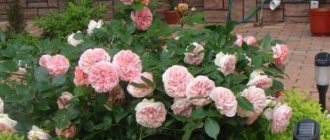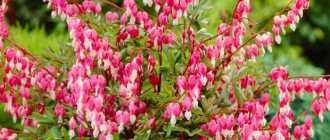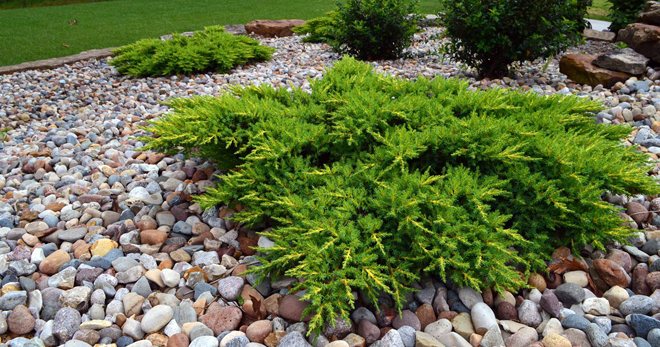
The common juniper belongs to the family of cypress evergreen crops. The plant is especially popular with gardeners because it is indispensable in landscape design. A distinctive feature of the shrub is that it tolerates cold well and does not develop well in hot climates. It is planted in the countries of western and eastern Europe.
Potted Varieties
At home, it is recommended to plant varieties that are shaped like a tree or tall shrub. At the same time, their growth remains significantly less than that of specimens in the natural environment. Many types of juniper are suitable for creating a decorative element using the bonsai technique. Thanks to the following step-by-step technology, the tree retains its decorative effect for a long time, despite its small size, it repeats the contours of mature specimens.
Types and some varieties of juniper for home cultivation:
- ordinary - Compressa, Depressa Aurea;
- solid;
- medium - Old Gold;
- Chinese - Plumosa Aurea, Alba;
- scaly - Blue Star;
- Virginia;
- horizontal - Wiltoni, Glauka.
Compress
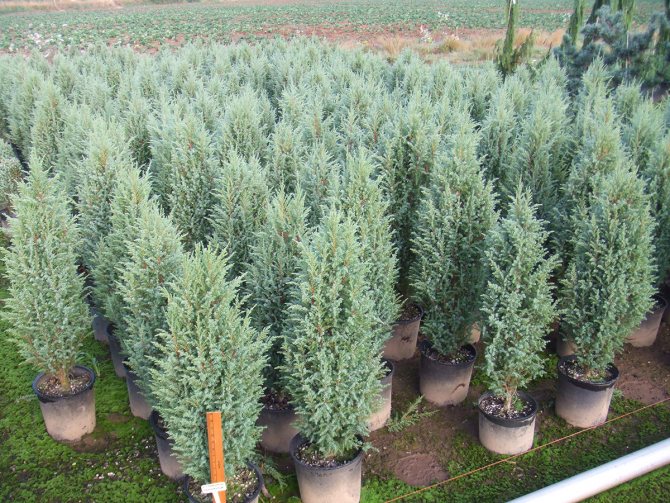

Dwarf shrub, columnar, dense, narrow, symmetrical crown. In nature, this variety grows up to 2-3 m, when grown at home, the height often does not exceed 1 m. The annual growth is only 5-8 cm. The branches are tough, densely located to each other. The needles are light green with a light stripe, thin, needle-like.
Juniper solid
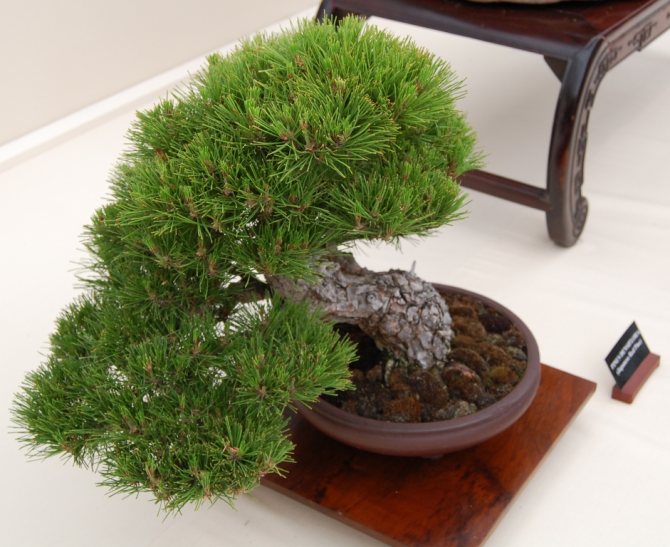

The species includes dioecious trees and shrubs up to 8 m high. The crown looks like a column, an egg or a narrow pyramid, less often it acquires a creeping shape. The needles are yellowish-green, pointed, hard, 1.5-3 cm long. The cones are small, round, black and blue in color, covered with a bluish bloom.
Plumosa Aurea
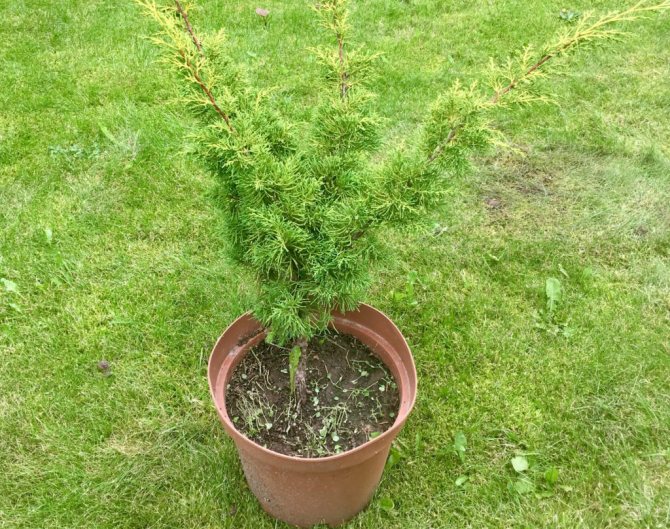

A dwarf shrub form, in the open field it grows up to 2 m upwards, occupies an area with a diameter of 3-4 m. The needles are golden-yellow in color, in winter they acquire a brown tint. The ends of young shoots hang down a little. Grows quickly, requires regular pruning when grown at home.
Wiltoni
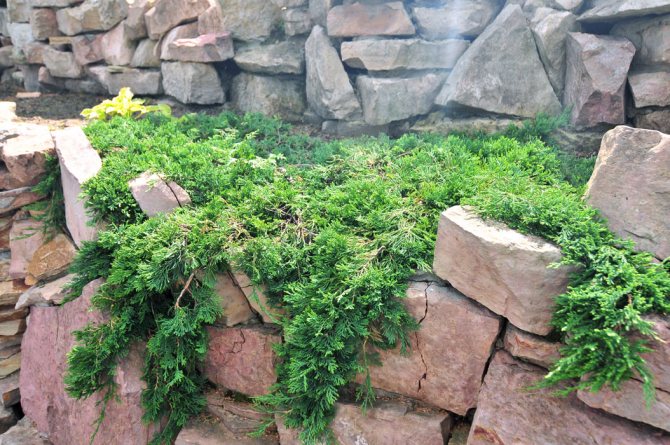

A creeping shrub with a height of only 0.1-0.2 m, with a crown diameter of 2-2.5 m. The branches are flexible, branched, in their natural environment they form a dense carpet. The needles are green, bluish in summer and reddish in winter. With home cultivation of this juniper, crown formation is required regularly.
Types of juniper for bonsai
Not all juniper varieties are suitable for creating a beautiful bonsai. The following varieties are best used:
Juniper Cossack - due to its unpretentiousness, it is best suited for bonsai. It is a creeping shrub, the height of which can reach one and a half meters;
Juniper Chinese. Its needles have a beautiful silver-blue hue. Its difference is that it can easily overwinter in frost;
Monarch variety. It is famous for its very prickly needles and an asymmetrical crown;
Strict variety. This variety is distinguished by soft needles of a gray shade. The crown of the plant is dense, growing in a vertical cone;
Mint Julep. A wonderful sprawling shrub with a mint pine needles aroma.Its peculiarity is its unpretentiousness to lighting - it grows beautifully in the light and in partial shade;
Juniper scaly Meyeri. When the plant begins to grow strongly, and this happens from May to June, its tips hang down, and they acquire a silvery-blue hue. Berries of this variety are dark blue with a touch of wax;
Common juniper. The great thing about this variety is that it can grow in the shade.
The variety is also frost-resistant. And the fact that it grows slowly can be used to form bonsai. The plant grows up to 3 m in height. Decorative varieties of this species can be golden, bluish and gray-colored needles.
Juniper is not only a beautiful-looking plant. It also has a beneficial effect on the general health of a person. Since it has a strong bactericidal effect. And medicinal berries can be simply brewed like tea.
Planting recommendations
In nature, coniferous species prefer to grow in areas open to the sun, some varieties tolerate light shading. The surrounding air must be humid. The composition of the soil for most varieties of juniper does not matter, but loose, drained, low-nutrient sandy loam and loam are recommended.
Purchase a seedling ready-made in a specialized shopping center or grow it yourself from seeds or cuttings. The vegetative method is preferable due to its simplicity and quick results. The stalk should be torn off with the heel, the cut site should be treated with a root formation stimulator (Epin, Kornevin). Root in a wet mixture of peat and sand. A full-fledged root system will appear in 2.5-3 months.
Preparatory work
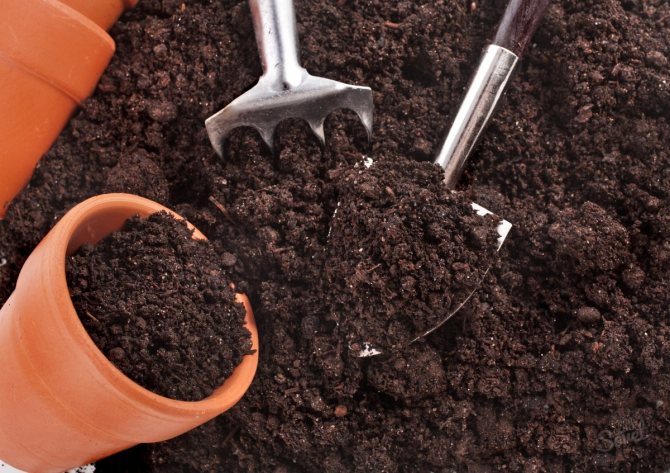

A flower pot for growing a homemade juniper in a room should be 2-3 times larger than an earthen coma on a seedling. Calculate the height of the container so that the drainage, the layer of nutrient substrate and the plant itself will fit. It is advisable to choose the container from clay in order to give stability to the bush. At first, the use of plastic is acceptable.
It is recommended to purchase a soil mixture special for conifers or to collect it from turf, peat and coarse sand in a ratio of 1: 2: 1. As fertilizers, it is allowed to add wood ash, humus, compost or nitroammophos. Vermiculite will provide a suitable structure. All natural materials should be disinfected with a solution of potassium permanganate, boiling water or heating in an oven.
On a note! When growing a juniper at home, the needs of certain varieties should be considered. It may be necessary to make the soil slightly acidic or slightly alkaline, add clay or increase the amount of sand.
Landing technology
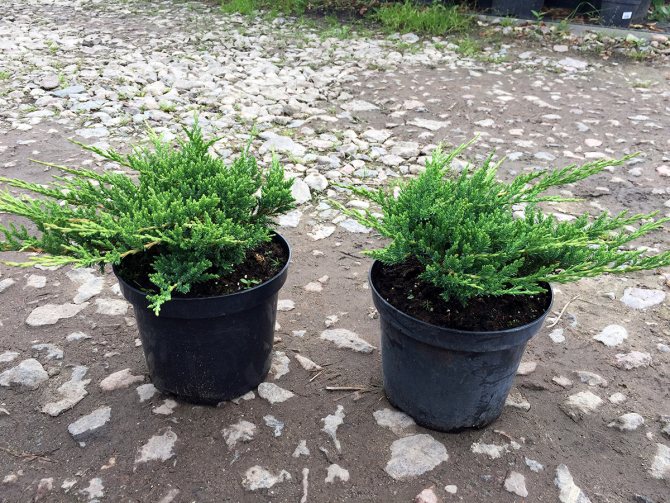

A step-by-step implementation of the procedure will ensure quick survival of the seedling. The operation is carried out in the spring, so that during the active growing season the plant has time to acclimatize and begin to grow roots and the aerial part. Planting and transplanting juniper at home:
- Wash, disinfect, dry the container.
- Purchase a soil substrate ready-made or collect it yourself.
- Add a layer of expanded clay and sand to the bottom as drainage.
- Fill with soil 4-6 cm thick.
- Carefully release the seedling from the previous container, taking care not to damage the earthen ball on the root system.
- Place the juniper in a new flower pot.
- Fill the resulting gaps with soil mixture so that the root collar remains at the same level.
- Drizzle, after 20 minutes, remove the remaining liquid from the pan.
- Spray the crown with a fine spray gun.
- Place on a lighted windowsill without direct sunlight.
- For the first week, take care of the seedling more carefully than the acclimatized specimen requires.
We plant correctly
The art of bonsai is over a thousand years old. Juniper is best suited for this. It can be grown as it appears. The very word "bonsai" meaning "tree in a bowl" means that the plant is planted in a flat pot. When the roots are well grown, they are pruned and transplanted back into a flat pot.
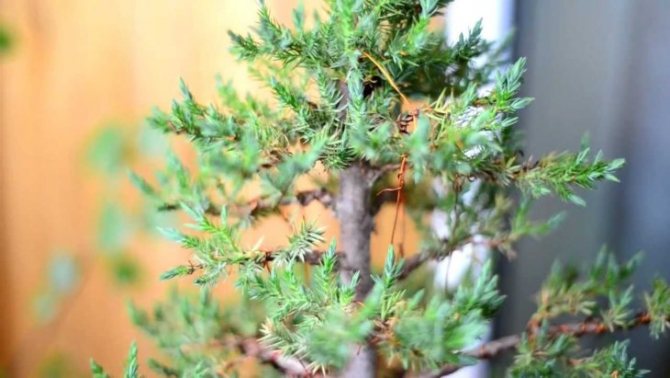

Bonsai juniper
For planting, you can use seeds, or propagate the juniper by cuttings. Seed germination is poor, so you need to harvest more of them. How to grow a juniper from seeds? The seeds are cones that are harvested in winter. They should dry well before March.
Before starting planting, the seeds must be placed in water so that they swell and germinate. Then the seeds require treatment with a fungicide for disinfection.
For planting, a soil consisting of peat and sand in equal proportions is used. As drainage, you can take a layer of crushed stone 2 cm thick. After the seeds are placed on the ground, they are sprinkled with sand and covered with glass. Only after the first shoots appear, fresh air is needed. You need to open the glass completely after the leaves appear.
Young trees reproduce well by cuttings. From the cut branches, the bark and all lower lateral processes must be cut off. If the bark on the shoots is already brown, they are not suitable for grafting. At a long shoot, pinch the top.
You can plant a plant using an air layer. To do this, wire the branch on the mother plant. Then the bark is cut off above this winding, covered with cotton moss and covered with a film. Roots appear in three to six months.
Care rules


Immediately after planting, it is necessary to create the most favorable environment for the bush. To do this, make sure that the soil in the pot is moist, spray the crown periodically. The room must be warm, a temperature of + 20 ° C is considered suitable. Protect the juniper from drafts, but, if possible, take it outside in the summer or on an unglazed balcony.
Home care includes:
- creating and maintaining an optimal microclimate;
- periodic watering;
- spraying the crown with settled water;
- loosening the soil;
- moderate feeding;
- sanitary and formative pruning;
- transplanting to another pot once a year;
- protection against diseases and pests;
- ensuring the wintering period.
Watering and spraying
Moistening the soil for juniper should be moderate. Complete drying out of the earth or a constant excess of liquid can provoke disease and death of a home plant. In summer, you should focus on the surface layer of the soil. When it is dry, the juniper should be watered. In winter, 2-3 operations are enough. To carry out the procedure, use settled water at room temperature, since cold water can harm the root system of the seedling.
As a dense earthen crust forms, gently loosen. Air supply to horses is a prerequisite for growing crops at home. It is equally important to monitor the humidity of the air. A dry and hot environment will cause the plant to dry out. It is advisable to spray the crown from a spray bottle 1-2 times a day. Installation of a special air humidifier will greatly simplify the work.
Top dressing
In its natural habitat, this coniferous species grows on poorly nutritious, often rocky soils. For this reason, it is not required to actively fertilize it. Excessive nutrition often causes the opposite effect, provoking the death of the homemade juniper. Always combine the procedure with watering so as not to harm the root system. As a fertilizer, use a solution of humus or a complex mineral composition for conifers. The multiplicity of operations for the active vegetative period should be 1-2 per month.
Pruning
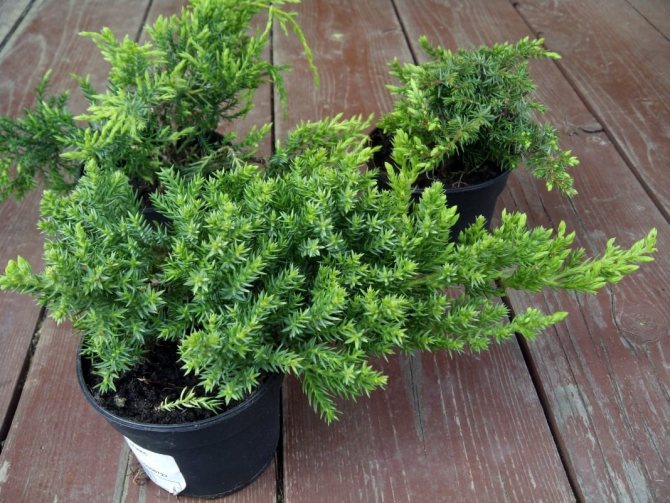

When growing a juniper at home in a pot, it is necessary to cut the plant in a timely manner in order to avoid its strong growth. In a home environment, the culture increases in size less intensively, but it is undesirable to allow the shrub to grow to a height of more than 1 m. The procedure is carried out in late February - early March. It is necessary to pinch young shoots, remove damaged, dry, broken twigs growing inside the crown. Pruning the top provokes a slowdown in plant development upward and an increase in lateral branching.
It is undesirable to remove a large amount of the above-ground part at one time. If necessary, repeat the procedure in the fall. In addition, once in 3-4 years, the overgrown root system should be slightly pinched during transplantation. This is especially important when creating a tree using the bonsai technique. The neat appearance, the reduced size of the trunk, branches and needles will make the bush the most similar to a mature specimen.
How to grow?
Making a bonsai from juniper is not that difficult. You can begin to form the desired shape from an early age, literally after buying a seedling. Or you can turn an adult tree into the desired option.
If the tree is already mature and also grows in a group, you need to plant seedlings and start forming the crown. First of all, you need to cut out all the shoots below so that the tree has a pronounced trunk.
Don't get too carried away. You can cut no more than 40 percent of the tree at a time, so you need to control this process.
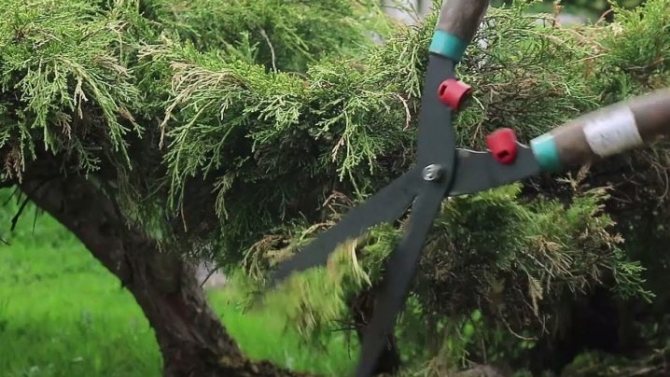

Then you need to remove all the branches that stick out and spoil the appearance. If the shrub is tall, and you want to get a smaller tree, you should trim the top of the head. Then you can already watch what is happening inside the crown.
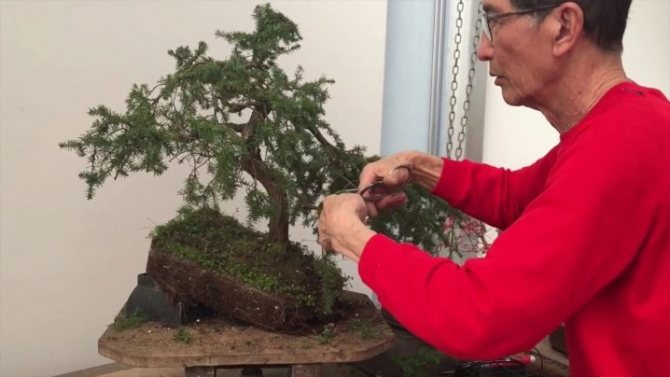

Sometimes it happens that the branches grow so densely that they must be thinned out, especially if you need to arrange a bonsai. In this case, you need to decide how you want to see the tree and choose the main branches on which the coniferous caps will form. Maybe they will have to give a certain direction, this will help the wire, which can be wrapped around the branch and tilted in the right direction.
Juniper bends well and lends itself to transformation, but nevertheless you need to do everything carefully so as not to break the branch.
If this nevertheless happened, the place of scrapping must be treated with garden varnish.
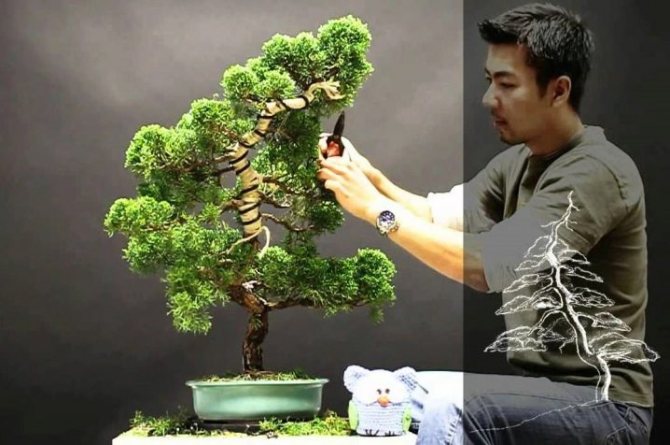

The barrel is also wrapped with wire. The tree will continue to grow but by wrapping the wire around the trunk and the necessary branches, you can quickly give it a certain shape. To form a lush crown, it is recommended to pinch the shoots. Such a tree will always look well-groomed and neat.
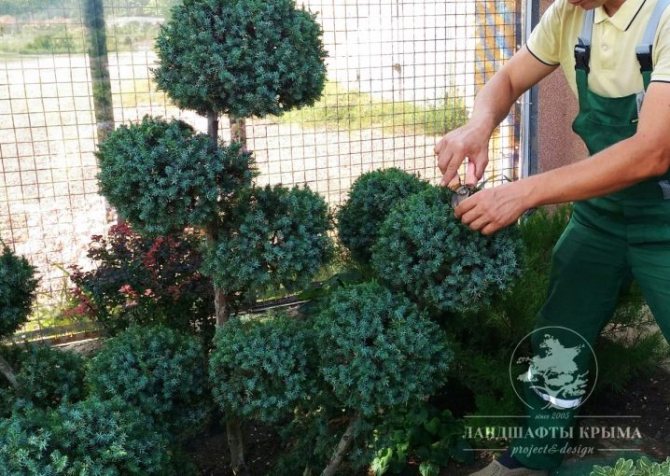

Is it possible to grow juniper at home in a pot
Junipers have a spectacular appearance, a plastic shape, and a variety of colors. The plant is planted in dachas, in yards, in gardens. If you wish, you can grow a juniper in your apartment. When planting a plant at home, this culture forms a low tree. In order for the plant to feel good in the home interior, it is necessary to select the appropriate varieties. Low-growing, slow-growing options are ideal. Reproduction methods include:
The first method is more laborious and does not guarantee success, since seed germination is usually poor, and several months pass from sowing to planting.
The second way is easier. In the spring, you need to cut a 10 cm long stalk from a tree that is at least 8 years old, place it in a mixture of peat and sand, cover and put in the shade. After 2 months, roots will appear, and then the plant should be transplanted.
Expert advice
When creating a bonsai, you need to follow some guidelines:
It is not necessary to remove more than 40% of the crown from the plant at a time, as it draws strength from the growing foliage. The plant will be shocked if it is different. Instead of foliage, underdeveloped needles will grow;
The number of buds on a plant can be increased by cutting off any growing tip. Before circumcision, you need to check that there are other tops nearby that can replace the removed one;
Inner foliage that has no growing ends can be trimmed periodically. This will help the added growth of the bonsai-shaped juniper.
I have a large garden and vegetable garden, several greenhouses. I love modern methods of plant cultivation and soil mulching, I share my experience.
Types of indoor juniper
Among conifers, few species can grow at home. Juniper in an apartment room or in a winter garden feels good. Among the species that can be grown as indoor plants, the following junipers are used:
Dwarf forms feel at home best of all, for example:
- Horizontal Wiltoni. It has blue needles, grows slowly, in adulthood it reaches 10 cm in height and 1 m in diameter. This species is a great backdrop for other indoor plants;
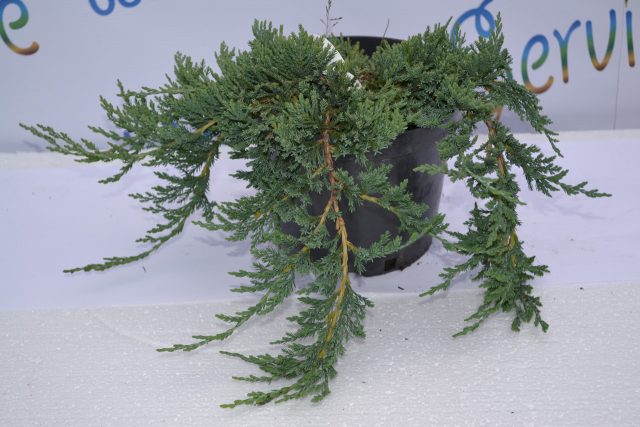

- Compress - as you can see in the photo, this is a columnar-shaped indoor juniper, miniature in size. It grows slowly: at the age of 10 years, the plant height is 60 cm;
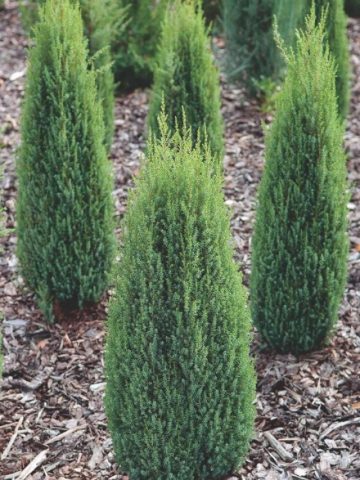

- Common room Depressa Aurea - creeping species, height -30 cm, diameter 50 cm;
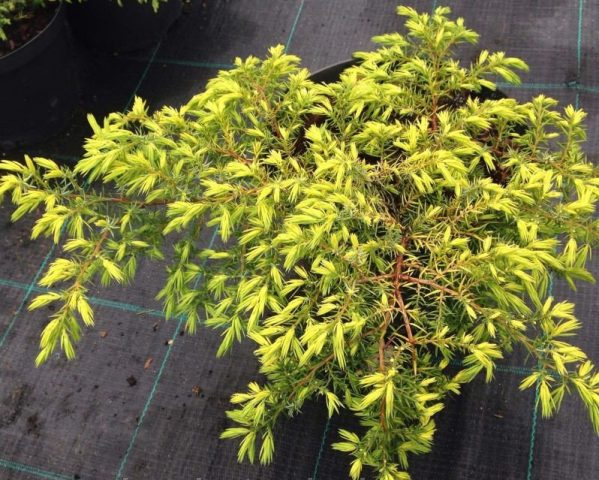

- Chinese Pyramidalis has a strict conical shape, blue-green needles, maximum height - 1.2 m;
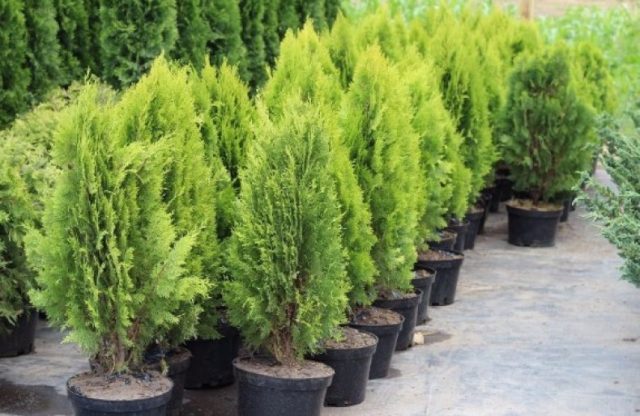

- Medium - Old Gold, has scaly foliage that takes on a golden hue in autumn, suitable for the formation of bonsai.
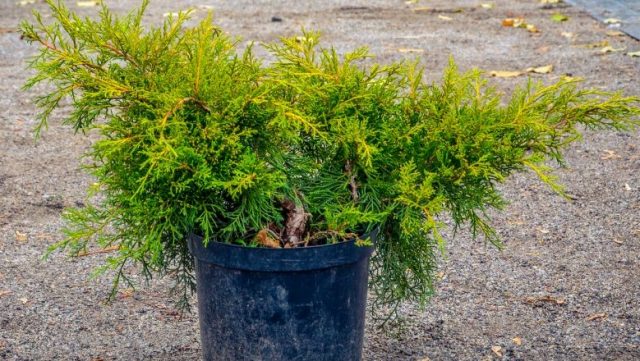

Indoor juniper varieties are also represented by larger, weeping and rocky specimens.
Juniper for bonsai - which one to choose
For the formation of bonsai, a plant with a compact crown is used. The trunk and branches of the juniper should bend well at the same time. This is all useful for correcting the appearance of the plant.
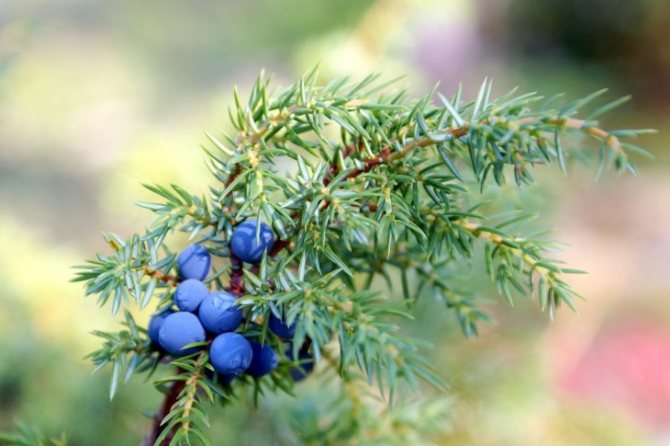

A juniper twig suitable for bonsai
Which plant is the most suitable? Consider the requirements:
- The variety should be thin and flexible. In addition, a large amount of foliage will be a positive point;
- The foliage of the plant should be dark green with light growing tops;
- Indoor foliage should not be affected by spider mites.
- Only a properly selected plant can become a masterpiece in the hands of the author.
A real bonsai can only be considered a tree that is fully formed in miniature sizes.
How to plant a juniper at home
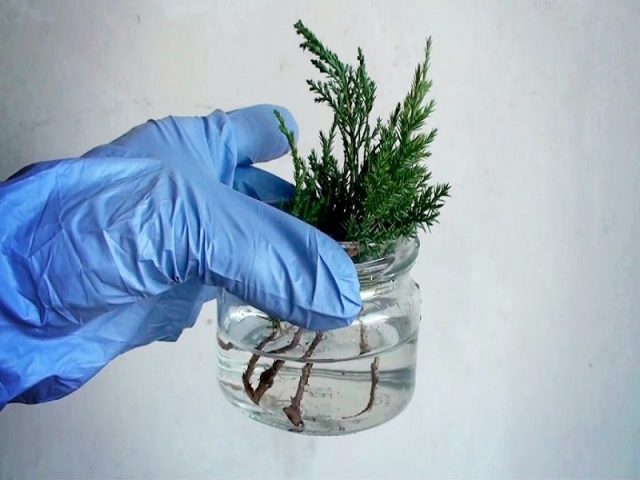

There are several ways to plant junipers at home. If there is a forest nearby, then in the fall you can find a young plant, carefully dig it up and, planting it in an appropriate-sized pot, bring it into the house. However, the disadvantage of this method will be the difficulty of adapting the plant to new conditions, and the real problem in this case is to keep the juniper in a pot until spring.
There is a planting option using cuttings. This method is more reliable and promising.
Planting material for the home can be obtained by layering if you root a juniper branch right on the street. After the roots appear, the branch is transplanted into a pots.
The easiest and most reliable way is to purchase the appropriate type of indoor juniper in a specialized store. In this case, it remains only to transplant the plant and take care of it according to all the rules.
How to root a juniper at home
For propagation of indoor juniper by cuttings, it is necessary to prepare planting material:
- In mid-spring, cut semi-lignified shoots with a "heel", 10 cm long, from the middle or upper part of the crown.
- Prepare a mixture of sand and peat.
- Moisten the substrate.
- Treat the planting material with a root formation stimulator.
- Place the cuttings in a container with the mixture.
- Pour the mixture with Kornevin's solution.
- Cover the container with a film, take it to a shaded place.
- Conduct constant spraying of crowns.
- Two months later, after rooting the cuttings, transplant them into separate pots of the appropriate size.
What should be the soil for juniper in a pot
Despite the widespread opinion about the unpretentiousness of conifers, for growing juniper in an apartment, soil is needed that has the properties:
- lightness and looseness of the soil substrate;
- the impossibility of further compaction of the soil mixture;
- breathability;
- moisture capacity;
- ability to retain moisture;
The composition of the soil includes:
- sod land - 1 part;
- leaf humus - 2 parts;
- peat - 1 part;
- sand - 1 part;
- coniferous litter - 1 part.
You can buy ready-made soil for indoor juniper in a specialized store.
Preparation of the planting container and material
A large pot is suitable as a container for planting indoor juniper. The root system feels comfortable in it. The soil in such a container remains porous, easily permeable to air and water. Moisture is evenly distributed throughout the volume, which makes it easier to care for the ephedra.
The most suitable material for containers for planting indoor juniper is ceramics, clay and porcelain. Natural materials exclude harmful substances from entering the soil. Having chosen the shape, design, drawing of the pots, you can emphasize the beauty of the plant. The advantage of clay pots is the ability to evaporate moisture through their surface. Due to the porosity of the material, the root system can be saturated with oxygen. The roots of indoor juniper are warm in the pot in winter, and cool in the heat.
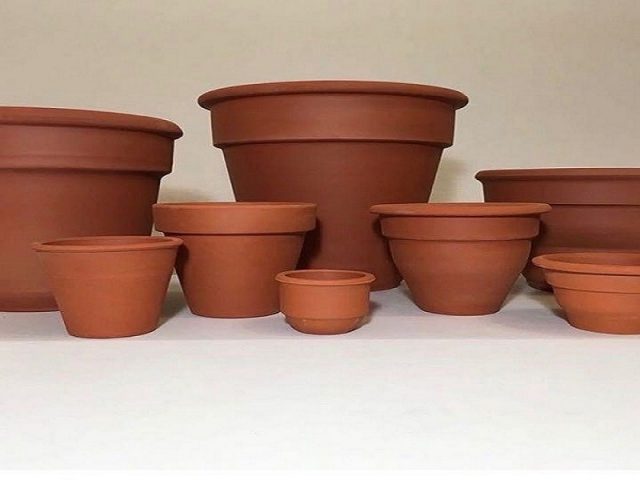

The disadvantages of ceramics include:
- fragility with careless care;
- plant roots can stick to the surface and be injured during further transplantation.
To prepare new clay pots for planting, they must be immersed in water for 2 hours. During this time, gases and harmful substances formed during firing are removed from the pores. A previously used container should be washed with soap and a brush, boiled with soda, and rinsed with running water.
How to plant a juniper in a pot
To plant a purchased seedling or a rooted cutting of an indoor decorative juniper, you must:
- Choose a pot, the volume of which should significantly exceed the size of the earthen coma or container in which it was purchased.
- Provide drain holes in the bottom of the container.
- Place drainage (pebbles, small stones) on the bottom.
- Soak the plant together with the container in a large container with Kornevin dissolved in it.
- Wait until the container stops floating and sinks to the bottom.
- Pour the soil mixture prepared in advance on top of the drainage 4 - 5 cm.
- Gently remove the juniper from the container, shaking it and squeezing the sides.
- Place the plant vertically in a pot 3 cm below the edge.
- Fill the voids with soil substrate.
- Tamp the soil a little.
- Drizzle.
- Place in a cool, bright place without direct sunlight and drafts.
- Shade if necessary.
Common juniper - planting
For cultivation of the culture, illuminated areas with nutrient soils are selected. Let's consider the algorithm of the procedure using the example of how the common juniper Gold Kon is planted:
- A hole is dug in the selected area. It should be slightly longer than the root system of the tree itself.
- The bottom of the pit is lined with drainage from sand, expanded clay or brick chips.
- A mixture is prepared for the plant based on peat, clay and sod land.
- The seedling is placed in the soil after 10-15 days.
- After filling the hole, the ground is compacted, and the bush is watered.
How to care for a juniper in a pot
The conditions for keeping conifers are almost the same for all species. They should be located on the north or north-east side of the house and at the same time shaded from sunlight.The plant reacts negatively to "moving", it is worth refraining from changing the place of residence of the indoor juniper. Otherwise, the ephedra must adapt to new conditions, its normal development is inhibited. In the summer, it is useful to bring the decorative juniper in a pot outside, in partial shade.
In the winter - to ensure the conditions under which the houseplant will be farther from the heating system. The best place for wintering is a warm loggia or a windowsill where it is cool. The optimum temperature will be in the range from 6 to 12 С. If there is no suitable place, then the ephedra can be protected from hot air and drying out with plastic wrap. At the same time, maintain access to air, but remember that winter is a real test for a houseplant, so you should help him in overcoming this period.
Optimal temperature, humidity and lighting
If you decide to plant a juniper in a pot at home, caring for it requires the creation of certain climatic conditions. In summer, ambient temperatures above 25⁰C and cooling below 12⁰C should not be allowed. The plant loves fresh air, but does not tolerate drafts. In the heat, it is worth taking it outside and carrying out daily spraying to maintain humidity and clean the foliage or needles from dust.
The plant needs bright light, but the lighting should be diffused. Direct sunlight can cause burns. Pots of indoor plants taken outside in summer should not be constantly in the shade.
How to water a juniper at home
In summer, in hot weather, plants require abundant watering. The condition of the earthen coma should be monitored. Both waterlogging and drying out of the soil are harmful. For watering indoor juniper, clean, warm, settled water is used. The frequency of the procedure is once every two days.
By autumn, watering is gradually reduced. If the air temperature has already dropped, and the room is not yet heated, humidification should be very careful, especially in inclement rainy weather, when the air humidity rises and the soil dries out slowly.
In winter, the air in the apartment is dry, humidity is low, evaporation is rapid. Watering should be carried out 2 times a month, but at the same time monitor the drying of the topsoil.
In the spring, the dose of hydration must be increased again.
The crown must be sprayed with warm, settled water regularly, throughout the year - twice a day in summer and every other day in winter.
How to feed homemade juniper
For a juniper growing in a pot, home care also consists in its periodic feeding. An ephedra, which is in the phase of active growth (from April to September), once every two weeks, should receive mineral fertilizer when watering. It is used according to the instructions. Indoor juniper really needs feeding, since it does not receive nutrients from the outside. With the onset of autumn, feeding is reduced and brought up to once a month. From December, fertilization is stopped until spring.
As a fertilizer, you can use humus added to the plant pot. The interval between organic and mineral fertilizing should be at least two weeks.
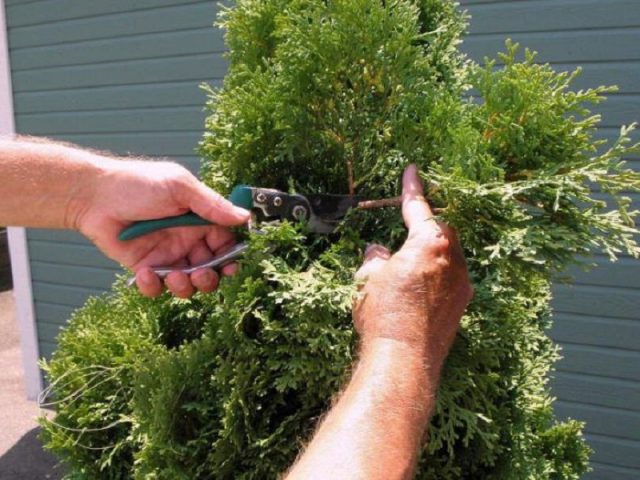

Trimming and shaping
To give the indoor juniper an elegant shape, it is pruned once a year for sanitary purposes. The optimal time for this is February. Coniferous growth is slow, but it accelerates at the end of winter. At this time, dried or deformed branches should be removed. It is recommended to cut off the young growth a little and a little more on the top of the plant. This pruning technique allows you to achieve the splendor and attractiveness of indoor juniper, as well as improve its health.
Coniferous species, decorated according to the canons of the Japanese art of bonsai, look quite original. The process is long, complex, requires patience and knowledge of how to properly shape and cut a tree, from which a small masterpiece is obtained.
Juniper Bonsai
The natural form of juniper can be considered columnar or bushy. For novice bonsai makers, it is best to take plants from a nursery with a height of 50-70 cm.
In order for a plant to grow in a beautiful desired shape, it is formed within two to three years:
To do this, first tear off the lower branches, then the trunk is wrapped with copper wire. In this case, care must be taken that the wire does not envelop the trunk too tightly, otherwise scars may remain. This is the art of bonsai: the ability to shape the tree into different shapes. It all depends on the imagination and the initial shape of the tree.
The plant should be wrapped with wire between March and November. It is left for 2-3 years, after which it is carefully cut. If the crown or branches are damaged during wrapping, it is necessary to treat the wound with "garden pitch".
The formation of the crown begins only after the trunk of the desired shape has finally formed. First you need to set the direction of the main branches. It is always recommended to place them so that they look in different directions. Next, they are engaged in the formation of secondary juniper shoots. They are fluffed in different directions, thus creating a voluminous crown.


Juniper bonsai
It may so happen that after the final formation of the juniper, you want to fix something. This must be done when the plant has not yet become an adult, since then any changes will be too painful for it.
The ends of the wire are cut so that they do not stick out from above. Those parts of the wire that point downward can be pushed into the ground. This must be done carefully so as not to damage the roots of the plant.
Diseases of indoor juniper
The indoor plant is susceptible to fungal diseases and pests.
- Brown mold most often affects young branches of indoor juniper in hot and rainy summer weather. For the purpose of prevention, it is necessary to thin out diseased damaged branches more often.
- Rust infects the needles, the shoots die off. For treatment, diseased parts are cut out, treated with immunostimulants, fungicides, Bordeaux liquid. The cut parts of the affected plant should be destroyed.
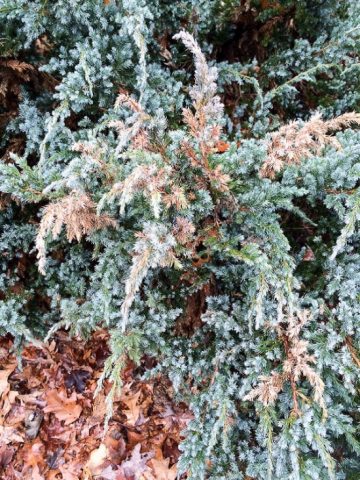

Indoor juniper pests include:
- scabbard - affects the needles, the branches of the plant dry out;
- sawfly - eats away tissue from the inside;
- Shoot moth caterpillars eat young branches.
You can fight pests by spraying with insecticidal agents.
Common juniper - diseases and treatment
Plants are unstable against fungi, which arise due to excessive soil moisture. Fusarium disease is manifested by drying and yellowing of the upper branches. With Alternaria, a brown bloom forms on the needles. In case of fungal diseases, the damaged parts of the plant are removed. Its branches and needles are sprayed with fungicides: Fundazol, HOM, Fitosporin. The same actions are performed when the culture is infected with rust.
Arnold common juniper is affected by biotorella cancer. With it, deep erosion is formed on the bark. The branches of the diseased specimen gradually dry out. To prevent the spread of the disease, the damaged parts of the plant are cut and burned. The bush itself is treated with a solution of copper oxychloride. Disinfect all garden tools that are used to perform pruning work.
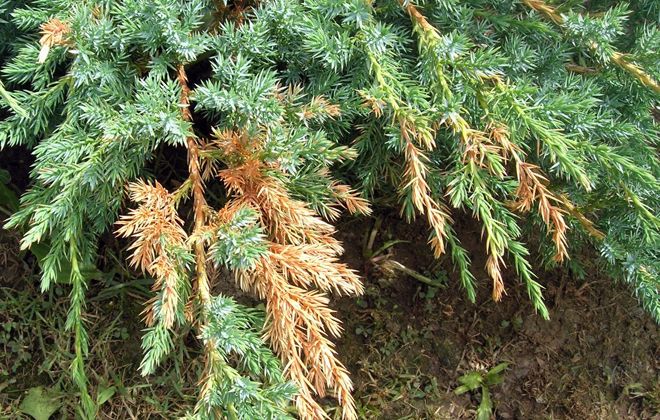

What to do if a juniper dries up at home
There are several reasons for yellowing and drying out of indoor juniper branches:
- lack of nutrients;
- excessive dryness or moisture in the soil;
- lack of full drainage;
- the introduction of fungi or pests.
After determining the reason why the home juniper is drying, it is necessary to take the necessary measures - to treat with drugs against pests, reduce or increase watering, change the soil substrate, drain and transplant the plant or carry out its full dressing.
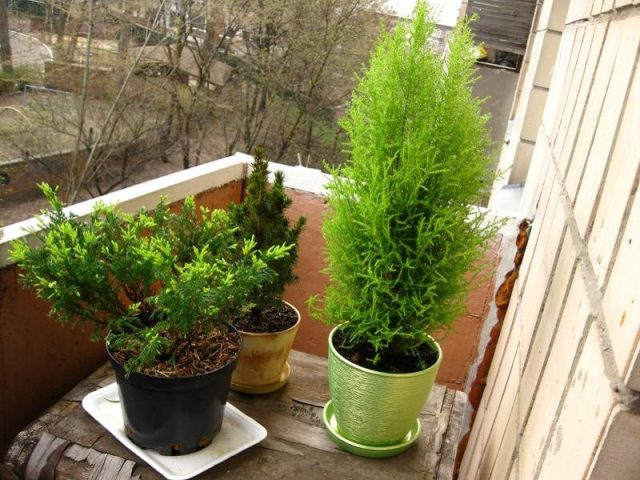

Common juniper turns yellow and dries - what to do?
There are three main reasons for the problem. Let's consider each of them:
- Physiological drying out of needles
... It appears from the side where more sunlight enters. To prevent the problem, the tree is covered with a protective material, its roots are often watered with warm water. - Fungal diseases
: rust, Schütte. The needles not only turn yellow, a black bloom appears on it. For the prevention of the problem, fungicides are used: "Skor", "Tilt". - Drying branches
... The disease affects the common juniper Khybernika. Fungal pathogens are causing the problem. To prevent its appearance and spread, it is necessary to organize a culture of moderate watering and carry out preventive treatments with fungicides in autumn and spring.
Juniper: varieties for growing in a pot
Juniper is a plant that can be grown in a pot without much difficulty. Such cultivation can be done at home, the main thing is to choose the right variety. Cultivars such as Chinese juniper and hard juniper are ideal. In nature, these varieties are able to grow to a fairly large size. At home, such junipers grow rather slowly, but subject to the temperature and humidity level, they feel quite well.
Juniper Nivaki
Nivaki in appearance resembles a juniper bonsai, but it is not grown in a pot, but in the open field. Also, niwaki-style trees do not form as dwarf trees. They are not subject to the same harsh measures as for ephedra bonsai. In this case, constant tough pruning, frequent replanting and soil devoid of nutrients are not required. Only the special cutting technique is important.
The use of oriental style when decorating a garden can look very original, it is only important to plant and form the plant correctly.
You can choose the same varieties as for making bonsai at home. For example, the nivaki technique can be applied to the Cossack juniper. But, since in this case the composition will not be portable, it is important to initially select the site and, in general, the conditions that are suitable for a particular variety.
It is worth picking up a strong and healthy plant. Afterwards, they are sanitized and the shoots are slightly shortened. It is important to choose which part of the plant will be the most visible. This will be his front side. It is important to initially think over which style of formation to choose, relying on the existing crown.
Most importantly, when creating nivaki from juniper with your own hands, observe the triangle rule. Each next tier of shoots should be smaller than the previous one. This principle is applied to all branches of the plant with which work is carried out.
We would like to note that in order to achieve the creation of a real nivaki from juniper, it will take several years, because you cannot immediately remove all inappropriate shoots. In addition, it is necessary to regularly carry out maintenance pruning, otherwise the branches will begin to develop in a natural direction and the tree will become normal again.
All work should be carried out only with clean and sharp garden tools. Gardening shears and pruning shears are usually sufficient. We recommend processing the wounds when all the necessary areas have been cut off.
We recommend shaping to create nivaki only in dry weather. This will reduce the risk of infection and the development of coniferous disease. At the end of the work, the plant needs to be watered abundantly.
It is important not to start trimming without thinking through the scheme in advance.You can draw it or make markings just on the plant. To guide the branches in the right direction, you will need wire or other props. The principle is the same as when forming a juniper bonsai.
We would like to note that nivaki is presented in different styles. Before you start pruning juniper, it is better to familiarize yourself with them and choose the one you like and the most suitable one.
While watching the video, you will learn about the juniper.
In an effort to decorate their garden, local area or apartment, many resort to the art of growing trees like bonsai. Certain types of shrubs and trees are especially good for this, and juniper is one of the first places. There are specific guidelines for growing juniper bonsai, which we will look at in this article.
Basic recommendations for planting junipers in the room
When planting and growing a juniper at home in a pot, you must remember the following recommendations:
- For a plant, it is better to pick up a free pot. Junipers grow well when there is plenty of room for the root system.
- At the bottom of the pot, there must be a drainage layer (broken brick, gravel, sand or expanded clay).
- Try to keep the soil from drying out, and be sure to drain excess water from the pan.
- In indoor conditions, dry and hot air becomes the greatest danger to junipers.
Bonsai varieties
Most often, the following varieties are used for nivaki - ordinary, Cossack, Chinese, medium, scaly. Each species has advantages and disadvantages, differences in external description. Common juniper is able to grow and develop in shade, is characterized by frost resistance, small annual growth. Among the proposed varieties, there are representatives that change color depending on the season.
Chinese juniper is suitable for the formation of bonsai trees, light-requiring, winter-hardy. The average species tolerates drought, root pruning. From a scaly tree with long-term formation, it is possible to obtain an unusual tree with dense pads of needles on a curved trunk. Juniper Cossack is poisonous, but is often used to create bonsai due to its high decorativeness and unpretentiousness.
The most common varieties are formed:
How to plant a juniper at home
If you live in a northern latitude with a cool climate, then it will not be difficult for you to go to the nearest forest and dig up a young juniper bush there. After that, the plant can be taken home and planted in a pot. If you live in a region where junipers do not grow in the wild, then the necessary seedling can be purchased at any major market. But it's one thing to find a seedling, and quite another to learn how to plant a juniper at home.
How to prepare the soil for planting juniper
Many beginner flower growers believe that the juniper is not whimsical at all to the soil. But this is not entirely true, before planting juniper in the ground, it is necessary to add a nutrient mixture. This mixture includes turf, peat and sand. In addition, it is advisable to add 200 g of nitrophosphate and any universal fertilizer to the soil (can be purchased at a flower shop). Juniper planting is carried out only in a pot with an additional layer of drainage at its bottom.
Planting juniper at home
Make a hole in a pot with pre-prepared soil 2 times the depth of the entire plant. If the root system of the juniper contains an earthen ball, make sure that when planting it is 8 centimeters above the bottom of the planting hole. Hold the plant and gently cover the hole with soil. After that, lightly tamp the topsoil and sprinkle it with mulch (you can use humus or peat).
Plant features
Evergreen juniper shrubs are able to decorate the space at any time of the year. Most often, certain types of juniper are used to create bonsai. Garden landscape design is created using such types as Chinese, Cossack, horizontal, ordinary. Although there are many varieties of this plant, it must be borne in mind that it is bonsai that can not be made from every species.
The needles of this shrub can be dark green, light green or with a blue tint, depending on the variety.
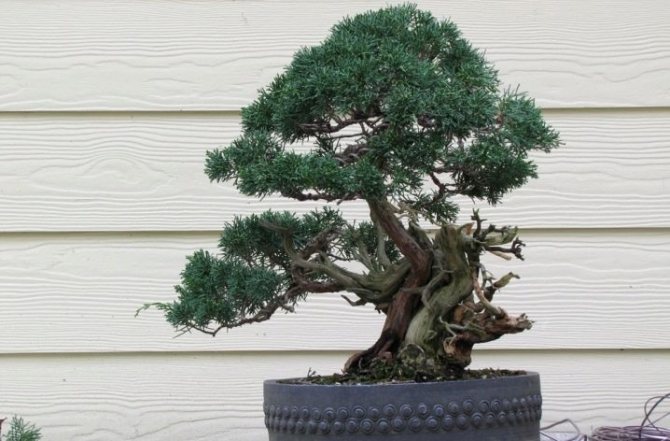

Juniper winters well in areas with a relatively mild climate, he will endure temperatures up to minus ten without problems, but under more severe conditions it must be carefully covered for the winter.
If the juniper is grown at home, then in winter it is advisable to keep it in a cooler room with a temperature of no higher than 18 degrees and away from heating appliances
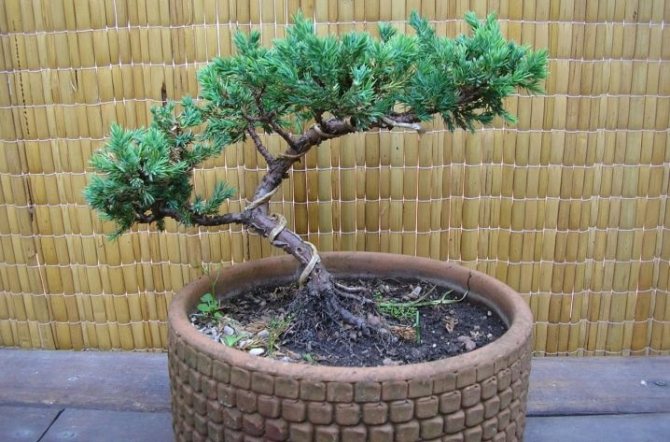

Juniper is planted in open sunny areas. He loves sunlight and moisture. So, if there has been no rain for a long time, it is recommended to spray it. But you do not need to fill in the juniper, he does not like too abundant watering. And before you water, you need to make sure the soil is dry.
Organic fertilizers are good for the plant. If you want the tree to grow faster, you can activate its growth in spring with the help of nitrogen fertilization.
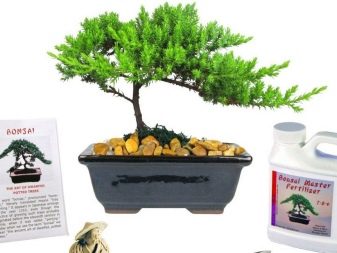

Rules for caring for juniper in the room
For a plant such as a juniper, indoor care is very simple, the main thing is to follow some recommendations. Home juniper does not tolerate moisture stagnation, and this must be taken into account in the process of caring for it. This is manifested in the appearance of root diseases and the falling off of needles. In order to avoid such problems, you just need to water the plant evenly. When caring for a juniper, ensure good air circulation in the room.
Watering and feeding
When talking about how to water a juniper at home, it should be mentioned that this plant needs moderate watering. In the summer, watering is carried out once every 2 days, as soon as the topsoil dries up. In winter, the juniper can be watered 2 times a month. The main condition for proper watering of a juniper is to prevent the soil from drying out. Also, in addition to watering, you need to spray the plant 1-2 times a day (in winter, once every 2 days).
Just knowing how to water a juniper in a pot is not enough, you also need to be able to properly feed the plant. During the period of active growth, which begins in April and lasts until September, mineral fertilizer must be added to the water for irrigation every 2 weeks. The fertilizer is diluted in accordance with the proportions indicated in the instructions for the preparation, as a rule, they are 1: 5. A home-grown juniper needs to be fed as it cannot get nutrients from the outside. In preparation for winter, the application of top dressing is reduced to once a month, and from November it is completely stopped.
You can also add a small layer of humus as a top dressing.
Pruning indoor juniper
Indoor juniper pruning is done once a year. The ideal time for this procedure is the end of winter (February). Conifers, especially juniper, grow rather slowly, but at the end of winter, juniper grows much more intensively. Therefore, experienced growers recommend transplanting the plant into a larger pot. Juniper pruning involves removing dried or deformed twigs. Start by pruning the young growth and then remove most of the top of the plant. Try to cut the top to a greater length than other branches. This pruning technique will make the juniper lush and will also improve the health of the plant. You can also give the plant any shape you like, for example, a pyramid or a cone.The main thing in pruning is to keep the plant compact.
Wintering a juniper, caring for a juniper at home
Many gardeners who grow juniper do not know how to properly care for a plant growing in a pot at home in winter. It is important to know that central heating can be detrimental to the plant. Therefore, the best place for wintering will be a cool windowsill or an insulated loggia. If the air in the room is hot and dry, then protection can be created for the juniper. To do this, you need to wrap the pot in plastic wrap. You can also attach one side of the film along the entire length of the window sill, and the other along the top ledge of the window (that is, exactly above the window sill). Try not to completely cover the plant by providing airflow. It is this method that will protect the plant from the effects of temperature.
Plant transplant
A young indoor juniper is transplanted once a year. Just like pruning juniper, it is done entirely at home. It is better to carry out the transplant procedure in the spring, the ideal time is mid-March. The height of the transplanted juniper should not exceed one meter. Before transplanting, cut a circle in the ground around the plant with a garden trowel. The depth of the slot should be down to the middle of the pot. Holding the juniper at the base, carefully remove the plant and place it along with the earthy clod in a pre-formed hole in a new pot. The size of the hole should be 2 times the size of an earthen coma with plant roots. Fill all the voids of the pit with soil and tamp it carefully. After that, sprinkle a small amount of peat or chopped bark of any coniferous trees on the surface of the soil. Remember to water the transplanted plant.
Comments (6)
Igor
06/03/2017 at 00:32 |
Cossack juniper grows very well in our region. It is used in the landscape design of the site, in the design of the alpine slide. This bush grows quite densely and beautifully.Reply
Julia Expert Plodogorod
21.07.2019 at 21:34 |
Hello Igor! You are absolutely right, these plants look great in many landscaping compositions. In addition to alpine slides, such plants can be used in gardens with strict observance of geometric shapes.
If the style of the site gravitates to English or Scandinavian, you cannot do without similar conifers. Any solutions using stones of different sizes will also look good in combination with a juniper.
For example, if there is rockery on the site or large or medium stones are laid out along the paths, low coniferous bushes will well complement the composition. We would like to note that even with small stones such as gravel, the Cossack variety of this plant will look harmonious.
Such plants can be both central figures in the composition, and serve as a background for other crops. Nearby, you can plant both ground cover phlox and large flowers with bright buds. If there is an artificial reservoir on the site, then regardless of its size, planting the described bush near the shore will make the lake look more picturesque.
Juniper Cossack can be planted along the path, so that its spreading branches make the edges of the path softer and more natural. Using the same technique, you can close defects, chips or cracks.
Reply
Alina
11/14/2017 at 14:09 |
I planted a horizontal juniper "Blue Chip", the plant is actually unpretentious, well established. The only pity is that it grows slowly, rather I want to get large bushes.
Reply
Julia Expert Plodogorod
21.07.2019 at 22:06 |
Hello Alina! There are several ways to help speed up the growth of this plant. To do this, first of all, you need to create optimal conditions for him with correct care.
Although this variety can tolerate drought, it is best to follow the rules of moderate watering. Especially if the weather is hot and dry. At this time, you need to moisten the bushes twice a week. This should be done slowly so that moisture does not stagnate on the surface.
If you want the bushes to grow faster, timely watering is very important. After all, the plants have been planted recently and are only forming a good root system. This requires a full supply of water and nutrients.
Also, in order not only to saturate with moisture, but also to preserve the decorative appearance of the plant, during hot summer days, you need to use the sprinkling method for watering. Light loosening of the soil surface will also be beneficial, because oxygen access to the roots will improve.
Also, the area under the bush can be covered with mulching material. For this, peat, rotted compost or old sawdust are used. If these requirements are met, the rhizome will develop faster, and, naturally, the plants will grow more intensively.
Also, nutrients are important for intensive development, that is, feeding. It is better to carry out this procedure three times a season. In spring, nitrogen is introduced, and in summer it is better to choose fertilizing with phosphorus.
In autumn, we recommend adding potassium. This increases winter hardiness and gives the plant the strength to develop normally at the beginning of the next season. It can be fertilized with both mineral agents and well-rotted organic matter.
Although at first glance it seems that pruning is contrary to the fact that the plant grows rather large, in fact it is not. Although it is not necessary to form such a plant, it is still worth carrying out sanitizing pruning. This will improve not only the appearance, but also the immunity of the plant. We recommend regularly removing dry, diseased, frozen, damaged branches.
Reply
Faina
16.11.2017 at 00:22 |
Here's how, it turns out, juniper can be grown at home, not on the site. We must take the idea into service - neither I nor my friends have this plant at home. As a gift for lovers of conifers, by the way, it will certainly do. The main thing is to follow the rules of cultivation, and the plant will delight everyone - both households and guests.
Reply
German
16.12.2017 at 00:22 |
We've made it harder. Juniper, thinned out with honeysuckle bushes, every 3 meters. Two years later, with periodic pruning, a beautiful "hedge" was achieved, plus a small collection of honeysuckle ... Although, additional watering was required in July-August.
Reply
Pest and disease resistance of homemade juniper
Indoor juniper is quite rarely affected by pests and diseases. In spring, the plant weakens from winter drying, and in summer - from sunburn. These factors can cause damage to the plant by various infections and pests. The main signs of soreness in a juniper are yellowing and dying off of the needles. First, several branches are affected, and then the whole plant.
When obvious signs of a disease appear, the plant, as a rule, no longer responds to treatment. The affected parts of the juniper must be cut and destroyed, and all remaining branches must be carefully treated with fungicides. When pruning, it is necessary to disinfect the pruner in alcohol, since the use of non-sterile tools increases the risk of disease.
Juniper is a very unusual plant for growing at home. But it is this plant that can bring comfort and peace to your home.
How does common juniper reproduce?
There are several ways to carry out the procedure: seeds, cuttings and grafting. The latter method is the most difficult, but if it is successful, it will be possible to obtain high quality standard plants. The vaccination is performed in May. On the carts and the handle, oblique cuts are made, and then they are tightly connected with plastic tape.Bonding points are pre-treated with garden varnish.
The common juniper sentinel is more often propagated by seeds. For this, seeds are extracted from fruit berries and soaked in water. The seed is kept in a refrigerator or in boxes under the snow. In early spring, the seeds are treated with Epin and planted in a greenhouse to a depth of 1.5-2 cm. The seedlings are placed in open ground three years after the appearance of young shoots.
Breeding cuttings are prepared in April - May. They are cut from the parent tree along with the heel. In this case, it is important not to damage the mother bush: it may dry out or get sick. Cuttings with a length of 2-3 cm are taken from dwarf varieties, from tall ones - up to 15 cm. Before reproduction, it is advisable to treat the lower part of the seedling with fungicides.
And so it caught on: caring for the conference
The good news: this coniferous culture is unpretentious and takes root well in a private house or city apartment.
The main thing is to spray the tree more often after planting, this will help it take root faster.
He should be moderate. In the summer, the conifer is watered about every other day (when the top of the potted soil dries up). In winter, the watering can can be taken out much less often - 2-3 times a month. In any case, create a golden mean - the earth in the pot should not become a swamp, but do not let it dry out either.
Also, do not forget about spraying - they can be carried out every 2-3 days, but if it is hot, then you can not hide the spray bottle at all, spraying your favorite tree twice a day, in the morning and in the evening.
Conifer is fed from April to September - these are the months of active growth of branches and needles. During these months, meals are given once every 2 weeks, and in October - once every 4 weeks.
Mineral mixtures are bought for the plant. They are diluted with water and brought in when watering.
Sometimes you can buy special food for conifers. True, more often it is imported. Let's say like this:
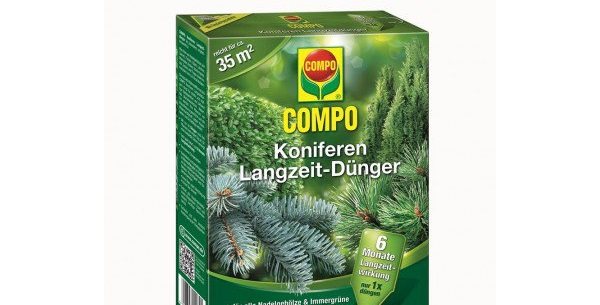

If you haven't found one, buy a mineral water for universal home ornamental plants.
Humus has also proven itself well. Moreover, it can be given in conjunction with mineral fertilizers. But! Give it only a week after adding the mineral solution.
Most home flowerpots are pruned in the spring. Not so with koniferen. It should be "tamed" once a year, in February.
What should you do:
- remove ugly (deformed), dried branches;
- remove all unnecessary - first young, then the apical branches (and do not feel sorry for the top, you can shorten it more than the other branches, this will make the juniper bush beautifully);
- if you wish, you can form a crown in the shape of a cone or a ball.
This procedure is also carried out once a year, but already in the spring - best of all in March.
In winter, before this, the plant is pruned so that the crown height does not exceed a meter.
The transplant is carried out as follows:
- Use a garden spatula to dig out a tree (pierce the soil around the conifer, in a circle with it). Try to hit with a spatula at least deep to the center of the pot.
- Carefully remove the plant along with the soil.
- Pour earth into a new pot. Form a hole in it twice as large as the root system of the plant that you removed from the old pot.
- Plant the tree as described above.
- Water the juniper after transplanting.
Important! Old trees are not transplanted - only the soil in the pot from above is collected and replaced with fresh ones.
What to do in winter
Koniferen is afraid of radiators, so if for the winter you put a pot with it on a closed (but unheated) balcony or on a windowsill, under which the radiator is turned off, this will be the best solution for a flowerpot.
If there is nowhere to put the plant and it has to spend the winter on a windowsill with a working battery, you can:
- spray the crown of the plant twice a day;
- to build a protective "spacesuit" for him, putting on a transparent bag on the plant - inside there will be a correct humid microclimate in which the sensitive needles of the coniferin will not dry out.
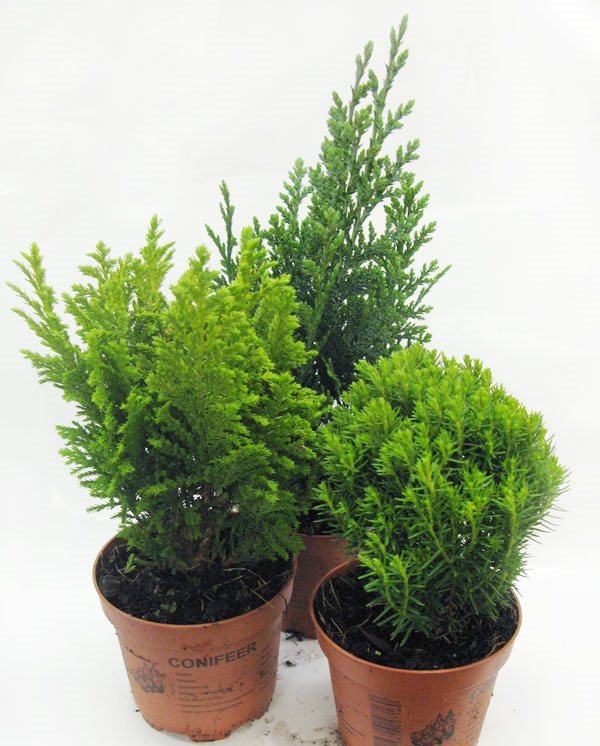

Is this plant sick
The plant can be attacked by pests: aphids, scale insects, spider mites. Insects are destroyed with insecticides, ticks - with acaricides. There are also poisons of general action that kill everyone at once, an example of such a drug is Actellic.
As for diseases, the hostess of a room conifer may encounter rust (a disease can cause salinity of the soil - either the water for irrigation was hard, or the tree was not transplanted for years, or a cat sneaks into the ground).
Main conclusions
- Koniferen is a forest plant that will easily settle in a indoor pot.
- You can buy a flowerpot or grow it yourself from a cuttings torn out in the park.
- Basic principles of juniper care: winter spraying, frequent crown trimming with scissors, generous lighting without direct sunlight.
You will hear more about the cultivation of conifers in our house (and not only "one-time", on New Year's Eve, but long-term) from this video:
Reproduction of juniper
In wild nature
reproduction
Juniper occurs with the help of seeds that are formed in the berry cones. But in indoor conditions this will bring a lot of trouble, so it is better to propagate the plant by cuttings. In this way, the appearance of the mother juniper is preserved.
But this procedure should be done with plants that are more than 8 years old. In the spring, a stalk is cut, the length of which reaches 10 centimeters. It is planted in a peat mixture with sand, put in the shade and covered with foil. The plant needs regular spraying. It will take 1-2 months, and roots will begin to appear. During this period, juniper is transplanted.
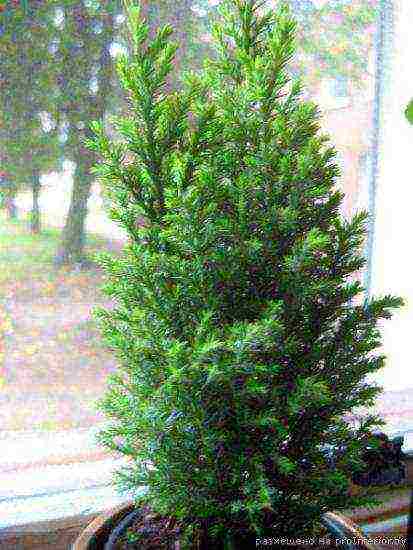

For growing at home, it is better to choose a Chinese type of plant. If we compare all varieties of juniper, then the Chinese variety needs the mildest wintering conditions.
If a person has decided to grow this plant in his room, it is not necessary to look for where to find
stalk
and then wait for it to take root. To do this, you can go to a nursery or a special store where young junipers are purchased. But it differs from other indoor plants and requires special care.
Balcony options suitable for winter landscaping
Balconies are initially open structures, but very often they are glazed. Winter landscaping of non-glazed spaces is possible only in relatively warm climates. The night temperature should not drop below ten degrees below zero. In this case, cold-resistant plants can be on the loggia all year round. In more severe conditions, winter gardening of an open structure is not possible.
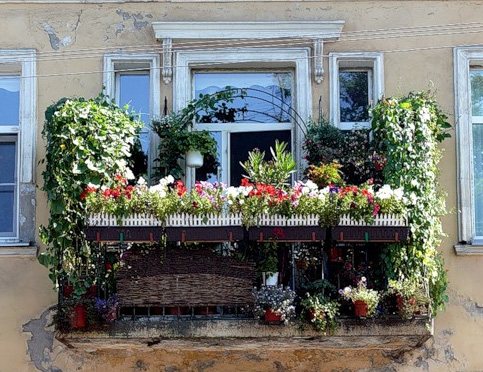

Glazed balcony designs are also different. Cold glazing without insulation is able to protect only from the wind and creates not the most favorable conditions. On such loggias, you can leave conifers, but in severe frosts, insulation and heating will be required.
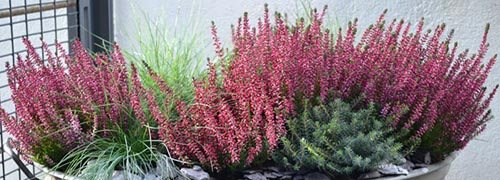

Warm glazing in combination with high-quality insulation creates optimal conditions for wintering plants and winter gardening. The temperature rarely drops below freezing, which allows the use of a variety of cold-resistant plants.
The benefits of a plant for humans
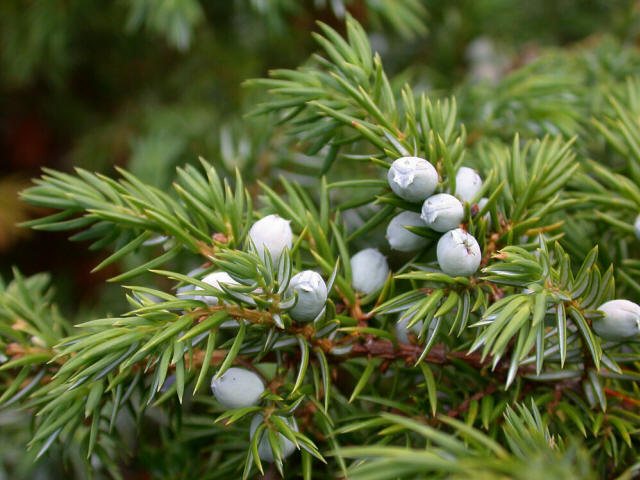

People have long paid attention to the useful properties of this representative of the Cypress family. The presence of juniper in the apartment will contribute to the creation of a unique atmosphere of comfort. Households who inhale its pine scent will certainly feel calm, and their sleep will become pleasant and strong.
The cone berries of the plant contain a huge amount of healing substances, due to which they are used to prepare various healing decoctions and potions. In particular, the correct use of drugs based on them helps to improve the functioning of the urinary tract.
With the help of juniper resins, a whole range of skin diseases can be cured.
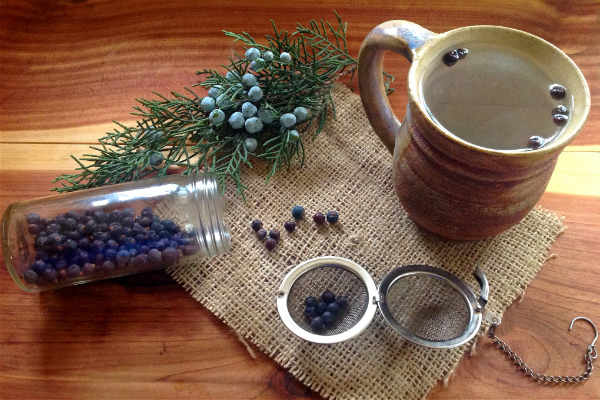

Taking drugs based on branches, needles of a plant will help in the fight against a number of ailments of viral origin.
The intake of fresh berries relieves the condition of a large, suffering from stomach ulcers. The use of a decoction prepared from them makes it possible to cure liver diseases, rheumatism. Since ancient times, breastfeeding mothers have used juniper tincture to increase milk lactation.
Growing a juniper at home will be a lot of fun. The contemplation of this beautiful plant will bring an aesthetic pleasure, and its wonderful aroma will contribute to the improvement of the atmosphere of the home. We advise you to view the article: Planting cherries with the main methods and rules for caring for it.
Basic rules for caring for culture
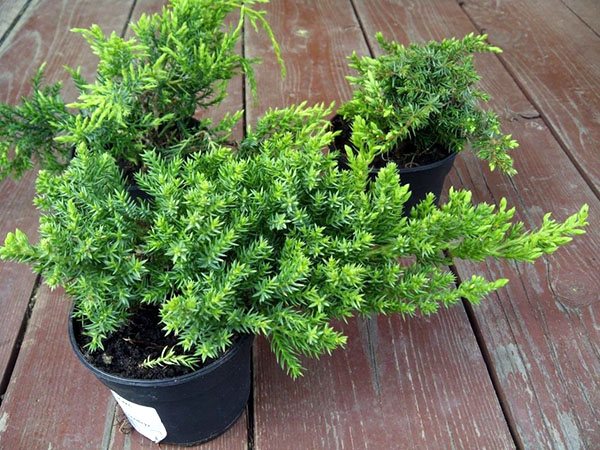

Reasonable juniper care includes several basic procedures:
- regular watering;
- spraying the ground part of the plant;
- top dressing of the soil;
- planned pruning;
- transfer to a new container.
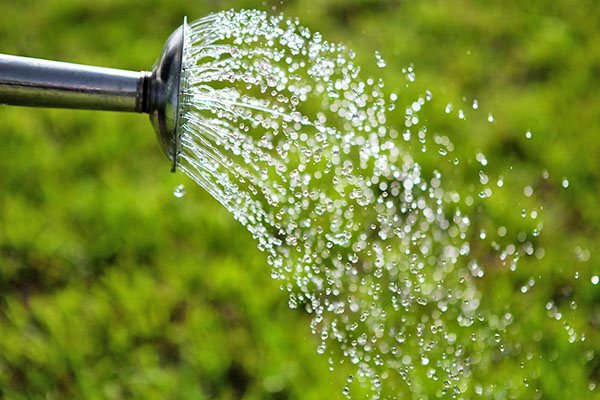

Typically, this evergreen crop loves moderate moisture. In the summer heat, the procedure is carried out as the topsoil dries out. Enough once for 2 days. In winter, the plant is watered 2 times a month. Regardless of where the juniper is located: in the shade or in the sun, it needs regular spraying. In summer, moistening is done at least 2 times a day, and in winter as needed.
The main task of the gardener is to prevent the potting medium from drying out.
Plant feeding is carried out during its active development. This usually happens from April to September. Prepare a solution in the traditional way, diluting fertilizers in clean water. The proportions are usually indicated on the packaging of the drug. Approximately for 1 part of fertilizer 5 parts of water. Regardless of age, indoor juniper is fed at intervals of 14 days. The main reason is a closed room, which limits the intake of nutrients in a natural way. Top dressing is stopped at the end of autumn, preparing the culture for the winter period.
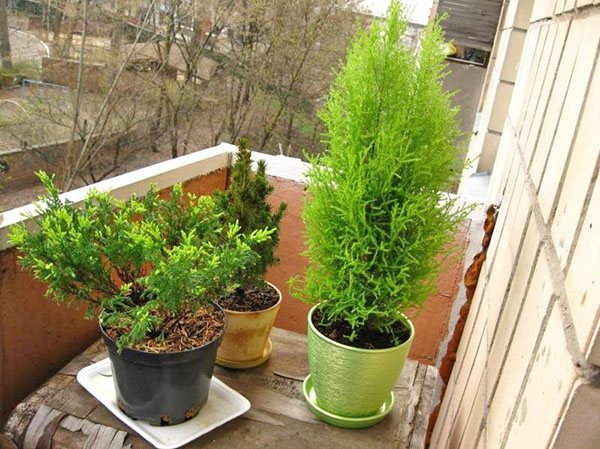

Since central heating can have a detrimental effect on crop growth, it is important to find a suitable location for it. A good option is to place the juniper in the winter on the balcony, which is reliably protected from frost. If necessary, the flowerpots are insulated with plastic wrap. At the end of winter, they start pruning to create a beautiful shape for the culture. Sometimes it's just a cone, but adventurous gardeners may come up with other options. In addition, the juniper grown on the balcony is transplanted into new larger pots. The procedure is performed in early spring, around mid-March. The optimum plant height does not exceed 100 cm.
Having got acquainted with an evergreen plant, you will probably want to grow it in your home. To do this, you should follow just a few simple rules for planting a plant. Carefully look after and find a worthy place for him in the living quarters. Let the luscious greenery and resinous aroma of juniper at home in a pot always bring joy to true fans of exotic indoor plants.
How to keep conifers at home - video
Juniper (from Lat. Juniperus) is a representative of the genus of evergreen conifers and shrubs of the Cypress family (Cupressaceae). This family includes more than 60 species of dioecious or monoecious plants. The growing area of junipers covers the entire Northern Hemisphere - from the polar zone to the mountainous tropics.
Conifers for the balcony
A large group of conifers, which are often used to decorate winter balconies, deserve a separate discussion.
Most conifers tolerate wintering well at temperatures from +6 to +10 degrees, so thujas, junipers, spruces, pines, cedars, cypress trees, araucaria and other conifers feel great on the insulated loggia.
How to grow thuja
Thuja on the balcony in winter is grown most often. This culture grows very easily from seeds, so it is not difficult to grow thuja on your own.The following varieties of western thuja with different crown shapes are suitable for growing in pots:
- "Danica" - this variety of thuja is characterized by slow growth, an adult plant reaches a height of 1m. For balconies and loggias, it is very important that the tree does not grow to a significant size, otherwise it will have to be planted in open ground.
- Variety "Teddy" - refers to dwarf varieties, the height of which does not exceed half a meter. The crown is formed by a haircut, usually giving the tree a spherical shape.
- "Recurva Nana" - reaches a height of 1.5 m, but the plant develops very slowly. At a young age, the crown of the thuja has a spherical shape, a little later it stretches out, forming a conical shape.
Watch a video on how to properly care for a thuja with your own hands.
In addition to green forms, there are varieties of thuja with multi-colored needles. It is worth noting that the tree develops best on a sunny balcony, the lack of light negatively affects the appearance of the tree - the thuja stretches, the color of the needles fades. Thuja varieties with colored needles are especially demanding on lighting.
If the balcony is oriented to the north side, besides, it is glazed, it is best to refuse to grow thuja. On the north side, boxwoods grow beautifully, which do not require bright lighting.
For conifers planted in pots and containers, there are two troubles: overflow and overdrying. In the summer, it is required to regularly water the conifers, spraying the needles several times a day. In winter, it is important to observe the measure when watering the plants. In cold weather, a wet earthy clod dries out for a long time, so a special irrigation regime is established for the winter time.
Related article: Glazing of the balcony p 44 boots
Conifers do not stop growing in winter, so they do not stop dosed fertilization of growing trees. In order to prevent an overdose of fertilizers in winter, you should use a granular fertilizer for conifers with a prolonged period of action.
We recommend watching a video on how to properly care for a thuja.
To prevent freezing of the thuja root system, the pots with plants should be carefully insulated, for which containers with plants are covered from all sides with straw or reed mats, foam and other insulating materials.
The secret of attractiveness is a slim "figure"
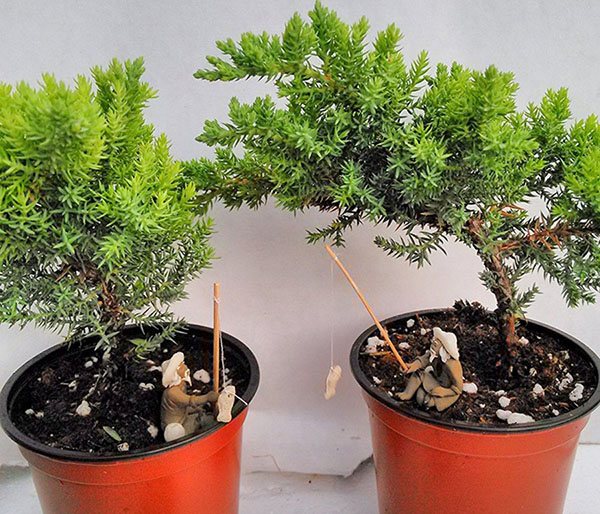

A native of the Cypress family, it is found almost throughout the Northern Hemisphere. It adorns mountain slopes in the tropics and endures cold weather in the Arctic Circle. Biologists count about 60 species of such plants.
Each of them has its own flavor, but all are united by a sophisticated appearance:
- miniature needles;
- cute bumps;
- pleasant resinous aroma;
- unpretentious care.
Almost all decorative home junipers are distinguished by a slender cone-shaped or ovoid crown. Among the dense needles (in its axils), miniature yellow spikelets are formed. Cones, consisting of light green scales, rise next to them. At the time of lush flowering, male spikelets pollinate female cones, after which bright blue fruits appear on the branches. A truly magnificent sight!
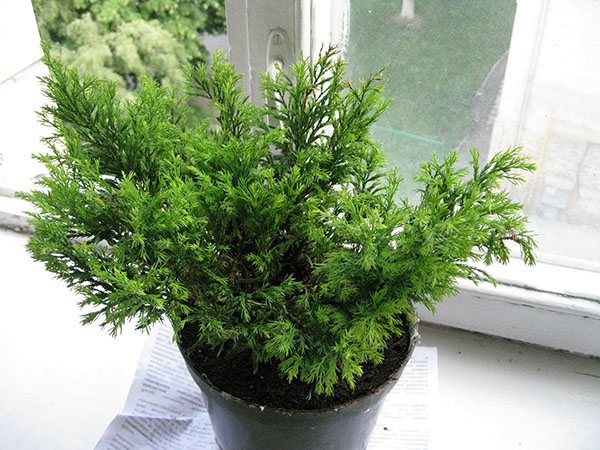

Not all types are suitable for growing juniper in an apartment, but only undersized varieties. The most popular ones are:
- horizontal;
- Chinese;
- ordinary;
- solid.
Many people like the horizontal Wiltoni juniper, which has blue needles. It grows very slowly, so it will be able to decorate the interior of a living space for a long time. A suitable juniper variety for the home "Compressa" is distinguished by its exquisite pillar shape. An adult plant grows only 60 cm in height, which allows it to be placed in any corner of the room.
In its natural environment, the juniper reaches about 600 years. Indoor counterparts live much less, but this is enough to enjoy their beauty.
The choice of conifers for pots on the balcony and terrace
The variety of needle colors and shapes can lead to dizziness. Choosing the right conifers for the balcony and terrace can be quite a daunting task., as it is very difficult to estimate what will grow out of a small seedling in a few years. Balconies often have limited heights, so they will best feel views that do not grow to large sizes. Only miniature, slow-growing and creeping varieties and varieties are suitable for flower pots on a balcony or terrace. Dwarf species are available in almost any garden center, so even owners of a small balcony will find a suitable plant for themselves, and a place on the balcony to put at least one container.
Read also: What to cook with pork medallions
How to plant conifers on the balcony and terrace?
Shape and color of containers Is a matter of individual preference. Keep in mind, however, that brightly colored flower pots will slowly warm up. Size is very important and must be adapted to the size of the plants, the volume of the root system and the number of conifers planted.
Limited capacity The pot gives the conifers on the balconies and terraces a great chance to dry out during the summer and freeze in the winter.
Containers should have drainage holes to help drain excess water. For this purpose, the bottom of the container should be sprinkled with a fairly thick layer of gravel, expanded clay or shards.
The best substrate for planting conifers on balconies and terraces, high-moor peat mixed with pine bark in a ratio of 1: 1 is used. It is also useful to enrich the soil with multicomponent fertilizers.
Soil reaction and the amount of fertilizer should be adjusted according to the preference of the selected coniferous option.
Rememberthat the surface of the soil should be 3-4 cm below the edge of the container, so that after watering the water does not flow out of the pot. The substrate should be covered with pine bark, moss or gravel to limit evaporation of water from the soil.
Seed breeding method
It is quite difficult to grow a plant from seeds, since it has poor germination. But if you do decide to grow a shrub at home from seeds. Then in this case, you need to plant a juniper in the autumn in boxes. During cold weather, the boxes should be taken outside, where they should stand for 4 months. The seeds preserved after the cold weather are planted in pots at the end of spring and continue to be stored in the fresh air. Usually, seedlings can be seen only the next year after planting the seeds. It is not easy to grow junipers from seeds at home, but if you create favorable conditions, then it is quite possible. In order for the plant to grow and develop perfectly, then the earthen coma should not be allowed to dry out. It is necessary to put a shrub in a well-lit place, and apply special fertilizers. Cutting method
Reproduction of a juniper at home using cuttings is easier than using seeds. But in order to carry out this procedure, the plant must be at least 8 years old. In the spring it is required to cut a stalk 10 cm long. Then it is placed in peat with sand, placed in a shaded place and covered with a film. The shrub must be constantly sprayed. After 2 months, roots will appear. It is during this period of time that the juniper needs to be transplanted.
Juniper: general description
This plant belongs to the Cypress family. In the wild, some of its species can reach a height of 8-10 meters. However, in the conditions of Russia, the juniper usually forms small, spreading, rather beautiful bushes. Its high forms in nature in our country are quite rare.
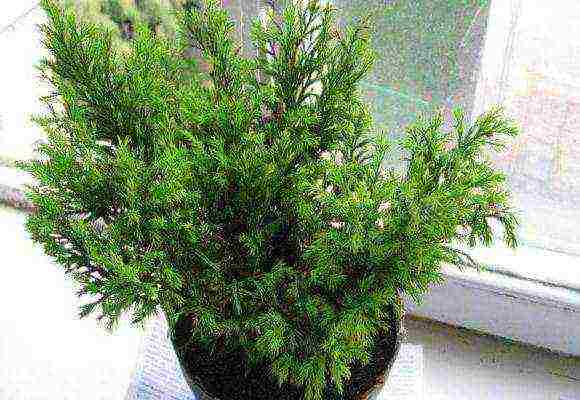

The crown of a juniper can have a conical or ovoid shape. The plant is dioecious. That is, there are two varieties of cones on it. Male ones have the appearance of yellow spikelets and are located in the axils of the needles.Female cones are composed of scales and are light green in color. When ripe, they turn into bright blue fruits.
The trunk of a juniper is straight, branching, covered with a grayish bark. The wood of this plant is very beautiful - it has an interesting texture and is distinguished by a pinkish tint. Juniper can grow in nature for up to 600 years.
Conifers in compositions and singly
Conifers in pots on the balcony and terrace look great individually and in the company of other plants... Even a small group of conifers looks quite impressive. Various shapes can be combined and mixed - columnar, spherical and creeping. In addition to varieties with green needles, there are also varieties with silver, golden, yellow and gray-blue. Thanks to this variety, you can create multi-color compositions.
On a large terrace, you can create a hedge in containers of columnar thuja or junipers planted in tubs or wooden long boxes. In large tubs and wide boxes, you can create a real small alpine garden on the balcony. You should choose varieties and species that grow slowly enough, and supplement the entire composition with perennials. Enough for this is really only fantasy and desires, and then caring care.
The choice of conifers for a balcony or terrace is huge. - everyone will find something for themselves. Varieties with a variety of needle colors can be combined with other conifers or perennials and, small evergreen or shedding shrubs. Conifers look great when paired with seasonal flowering plants... It is worth remembering that taller specimens should be planted at the back of the pot, and with low shoots in the front. Due to the different needs for water and fertilizers, they should be planted in a separate container, as well as separately watered and fertilized.
Common juniper in landscape design
Plants are used to decorate summer and winter plantings in the garden area. Dwarf varieties are used to decorate alpine slides and rockeries. Tall crops are planted along the fence or garden paths. The composition for illuminated places in landscape design includes the following types of plants:
- primrose;
- ruler;
- common Andora juniper;
- western thuja;
- Japanese spirea.
A different composition is used to decorate areas located in partial shade. Plants that can be planted next to common juniper:
- barberry;
- cinquefoil;
- heuchera;
- bladderworm;
- spirea.
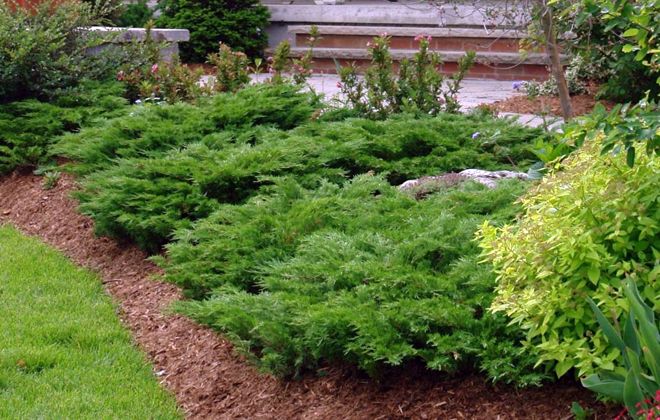

Another way of landing
Cuttings, in order to get an adult indoor juniper, are usually used only from mid-May to early July. At a later time, branches rooted directly in the garden should be used as planting material.
It will also be very easy to get juniper cuttings if desired. To do this, the lower branch of a young plant just needs to be pressed horizontally to the ground and pinned in this position. The end should be bent vertically and attached to a peg. The place where roots should form on the branch in the future must be constantly kept moist.
Watering for juniper
Watering is required in moderation. As soon as the top layer becomes dry after two days, watering should be carried out in the summer. But in winter, the plant must be watered once, sometimes twice a month. The main condition for proper watering is that the land is not dry.
Do not think that there is nothing else to do besides watering. Juniper loves moisture, so it needs to be sprayed several times a day. In cold times, if the plant stands near the battery, it is better to fence it off from it, since excessive heat during the dormant period is destructive for it, and in this case, sprinkle it as often as possible.
Comments (5)
RomkaNSK
10.07.2017 at 05:59 |
I love the smell of juniper, so I was undoubtedly glad to see in this material as beautifully and skillfully as possible to do it all. Before that, the bushes just grew, and now I will make beauty.Reply
Igor
07/26/2017 at 01:02 |
I did not think that the shape of the trunk and crown of bonsai plants is given by the designers, I always believed that the tree itself grows so intricately, but it turns out that everything is kept on wires.
Reply
Anna
07.10.2017 at 01:23 |
What an interesting idea to create a juniper bonsai. I never thought that this plant could be suitable for composition. I do not have a juniper, but now I will definitely take up this idea and try to make a bonsai from it myself.
Reply
Zaitseva Tamara Mikhailovna
23.06.2018 at 15:04 |
My friend has been growing such a plant for several years for sale. The “tree” that has taken shape is very expensive and she has already put her business on the “stream”. The main thing is that the juniper is unpretentious!
Reply
Olga
19.08.2018 at 04:39 |
The bonsai on the site is now a very fashionable decoration, but I never thought that you could use a juniper for it. Usually, not all plants are suitable, but mainly small trees or bushes with a clearly visible trunk and crown.
Reply
Juniper varieties suitable for home cultivation
There are many types of juniper, on the basis of which scientists have developed many varieties suitable for growing at home. Having planted this plant in a flowerpot, providing it with proper care, you can count on getting a beautiful tree or bush, which is guaranteed to give a kind of "zest" to any interior.
The most popular are the Chinese juniper (Juniperuschinensis) and the hard juniper (Juniperus rigida). Under natural conditions, they are capable of reaching considerable heights. Indoors, these types of indoor juniper, varieties bred on their basis, planted in pots, show slow growth rates. Providing the recommended temperature and humidity conditions, such plants will feel very good at home. You can read the article about Andorra Variegata juniper.
Reproduction of juniper: basic methods
The most widespread are two methods of reproduction of juniper: the seed method, as well as cuttings. Each of them has its own nuances, advantages and disadvantages.
Seed breeding method
When studying information on how to propagate a juniper at home using seeds, you need to take into account the low efficiency of such a procedure due to the poor germination of planting material. In most cases, this method is the choice of breeders.
Having decided to breed juniper from seeds at home, it is advisable to hold this event in the fall. As a container, it is worth choosing boxes that are taken out into the street during the cold season and left for 4 months in the open air. The preserved hardened seeds are planted in pots at the end of spring.
The containers are placed in a well-lit place. Seedlings need timely watering, which prevents the soil from drying out. You can count on the emergence of seedlings next year.
Cutting indoor juniper
Compared to the method described above, propagation of a juniper by cuttings is easier. Plants that are at least 8 years old should be used as "donors".
Cuttings about 10 cm long are cut in the spring. Next, they will need to be placed in a mixture of sand and peat. The container with cuttings is installed in a shaded place, covered with a film. The seedlings are constantly sprayed. After 2 months, roots are formed. Fortified, rooted specimens are transplanted into flowerpots.
Transplant and reproduction
When transplanting, make sure not to damage the earthen lump that covers the roots.If even one large root is damaged, the plant will be sore after transplanting.
If there is a desire to grow juniper at home from pine berries, it is necessary that they survive the winter period - stratification.
It is necessary to replant young trees and shrubs every year in the spring. When the plant turns four years old, it is enough to transplant once every three years. Old trees should be pruned as the branches dry out, as they will interfere with the growth and development of new ones.
Juniper berries must be taken in black or dark blue for planting. Green berries are fruits that ripen, they cannot be taken for seedlings, but they can be used for treatment. Sow the berries into the soil to a depth of 2 - 3 centimeters, put the pot outside or refrigerate. If the winter is warm, then the berries must be stored in the refrigerator, as they may begin to germinate ahead of time.
Future seedlings are best taken from trees that are already ten years old. Cut off a branch with a small knobby growth, free the base from the needles and plant in the ground. After planting, water well, pour a layer of humus on top and cover with a transparent bag. The next day, remove the bag for 15 minutes so that the condensate evaporates, then cover the plant. Carry out such airing every day, gradually increasing the time. Then remove the bag and continue your gentle care until it is completely rooted. Thanks to the package, it will be easier for the plant to go through the adaptation period.
Juniper is a plant that will bring comfort, peace and well-being to your home. For those who love Crimea, this evergreen plant will become a part of summer and a living gift from Paradise on earth.
Juniper - signs, superstitions, warnings. Can you keep a juniper at home? Planting junipers at the entrance to the houses. In today's article, you will find out why juniper is not advised to be placed next to you.
Juniper
- a coniferous plant, the popularity of which paves the way from European countries to the regions of Russia. Since ancient times, conifers have been popularly associated with the other world. The ancients in general often ascribed spirituality to nature. Animatism is a characteristic feature of the beliefs of primitive people. According to legends, special trees possessed separate powers, had a connection with specific spirits and influenced the life of people: oak - power, living fire, strength; fern - magic, the other world.
The fern received a special position among the inhabitants of England:
their dark, veiled, juniper berries were made with witchcraft tinctures - today they make gin. Juniper bloom is associated with the beginning of spring. The evergreen plant represents good weather. Juniper branches are always lifted up, which is why it is easier for the subconscious to associate it with development and strength. What can not be said, for example, about the weeping willow (willow), which, with its drooping appearance and location near the water, evokes apathy.
Despite many delicious and interesting properties, juniper refers to cypress plants, and they are known to be planted in the cemetery
... Since it is customary for us not to bring anything into the house from the cemetery, our grandmothers could answer the question of whether it is possible to keep a juniper at home with a firm “no”. Whoever will grow a juniper at home is a plant for the yard, but carrying its branches into the house is not good. The logic, obviously, can be traced.
How to make a bonsai with your own hands?
Literally "bonsai" in translation from Japanese means "growing in a tray." In a tray - because these trees are grown in special bowls, the depth of which is no more than 5 cm. Firstly, it is original and beautiful in its own way. Secondly, such content forces the root system to develop in breadth, and not go deep down, making the trunk unnecessarily massive and wide.
To make a bonsai with your own hands, you can purchase ready-made seedlings in a special store.But it is much more interesting to grow a bonsai directly from seeds. Then, from the very appearance of sprouts, you can form a bonsai of exactly the shape that you need.
Growing a tree in stages looks like this:
- The seeds are planted in bowls.
- As the trees grow, they cut off the extra branches (usually from above and below).
- A soft wire is used to guide the growth and bending of the remaining branches. The bend can be anything.
- The top of the tree is cut off when the desired height is reached, usually 30-70 cm.
- Periodically, the tree is transplanted and its roots are cut.
The Japanese claim that a bonsai tree goes through three stages: adolescence (a period of active growth), maturity (the time of crown formation) and long old age, during which the type of tree is already determined. In this state, it pleases the owners for many years.
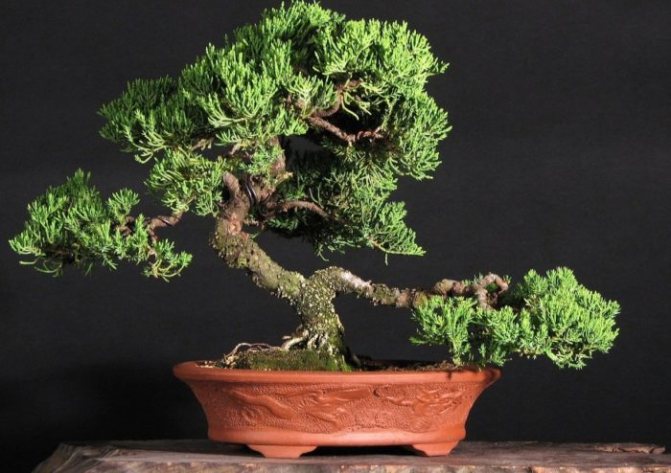

Where can I get a small juniper
In most cases, buy. Especially often, such plants begin to be offered in flower shops and even supermarkets on the eve of the New Year. They are even decorated with miniature balls and artificial snow, imitating a herringbone.
It is especially interesting to find a conference mix on sale. These are different varieties of indoor juniper. Having bought everything at once, you can create a unique decorative composition at home.
However, if you have never seen such plants on sale, and you want to grow an indoor conifer right now, you can go to the nearest forest or park, find this plant and break off the stalk. It takes root well at home. And then just put the baby in the pot and take care of him, as described above.
A garden center expert will tell you more about the rooting of a juniper twig:
Well, it's even easier to find a ready-made bush in the forest, dig it up and bring it home. True, such a "feint" will take place only in the northern latitudes - it is there in the wild that you can find this thorny, fragrant plant.
Protecting conifers on the balcony in winter
In late autumn conifers in containers need frost protection. To do this, they are abundantly watered and covered with thick paper, white fleece, agrofibre against dry and cool winds.
If possible, then a container with a coniferous tree should be placed in a larger cardboard box, and fill the space between the pot and the box with expanded polystyrene, straw or sawdust.
And for those who like to know more, we suggest that you familiarize yourself with the video about conifers for the balcony
Conifers retain their green color even in winter, which makes them decorate balconies and terraces all year round... Find out the rules for caring for them, as well as a list of species and varieties of conifers for flower pots on the balcony, terrace.
What varieties exist
This plant is appreciated by lovers of decorative cultures, including for the variety of forms. But, of course, not all junipers can be grown indoors. The types and varieties (with photos), the most suitable for apartments, will be discussed by us below.
It is believed that stunted junipers are best suited for indoor cultivation. For example, you can plant a Blue Star in a pot. It is a very beautiful juniper with blue needles and horizontal shoots. He prefers slightly sour soil. Below is a photo of this particular plant.


Also, lovers of decorative crops often grow a variety of media in an apartment. This hybrid was bred by crossing a common wild juniper and a Cossack one. Its main advantage is considered to be unpretentious in terms of care. How it looks can be seen in the photo.
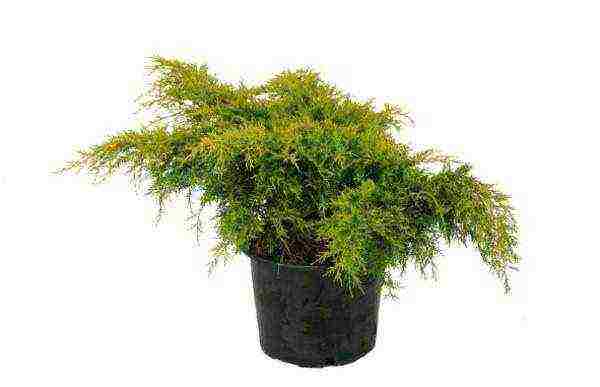

Chinese Blaauw variegata is a low shrub indoor juniper with branches growing straight up. This is another popular variety among fans of ornamental plants. It looks very nice in a tub. His photo is presented below.
These are the junipers most often grown in apartments.Species and varieties (with a photo, it will be easier for lovers of ornamental plants to decide on the most suitable juniper), these are actually very beautiful. But if you wish, you can grow at home, of course, other varieties of this culture. Very attractive varieties are, for example, Squamata, Sabina, etc.
Plant transplant
Indoor juniper at a young age is transplanted once a year. This procedure is carried out in the spring. When the plant is already quite old, it does not need replanting. It will be enough to change the topsoil. This should also be done annually.
Drainage is considered important for the plant. It is made from a sod-peat mixture to which sand is added.
For Cossack and solid juniper, a small amount of lime is also added to the soil. For the virgin variety
into the ground
you need to add clay. If you adhere to such simple recommendations, the juniper will develop normally and please its owners.
Juniper is an unusually spectacular evergreen with a plastic shape and a varied palette of colors. This original culture is usually grown in gardens and courtyards. But if you wish, you can also decorate a city apartment with juniper. When planted indoors in a tub, this ornamental crop forms a small attractive tree.
How to fertilize
With regard to top dressing, homemade juniper is also relatively unpretentious. When grown indoors, adult trees are fertilized a maximum of one or two times during the warm season. Young people are fed mainly with mineral compounds. Most often, special mixtures are used for juniper intended for coniferous ornamental crops. They are brought into pots with young plants about once a month. Fertilizing juniper with organic matter (manure or humus) is strictly prohibited. The use of such dressings can lead to deformation of the crown of the tree.
How to trim
In most cases, indoor juniper does not need to form a crown. All that is needed for the plant to look attractive is to remove dried and growing branches from the bush. If the juniper looks too asymmetrical, you can also trim the crown a little on the desired side.
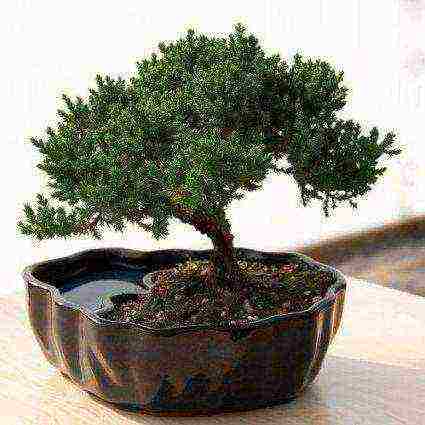

When pruning junipers, you should be guided by the principle - less is better than more. If too many branches are removed from the plant, it can slow down growth.
Plants of the genus juniper can be grown not only in personal plots, but also at home, forming them into a standard dwarf tree or bonsai. In this case, the top layer of bark is removed from young plants, and visually the impression is created of an old tree that has seen a lot in its lifetime. To enhance the effect, bonsai are usually planted on stones, creating an appropriate entourage. The crown of the required shape is formed with the help of a wire, branches that are too long should be cut off (pruning is best done with the onset of spring).
Decorative juniper is able not only to please the eye, but also, possessing strong bactericidal properties, purify the air for several meters around. However, when growing a juniper at home, do not forget that these plants do not tolerate dry air and high temperatures. If the indoor juniper is in a hot room, it will quickly die. For this reason, it is extremely important to create comfortable conditions to which plants of this genus are accustomed in nature - to provide access to light, maintain a sufficiently low temperature in winter, and regularly ventilate the room.
For cultivation at home, Chinese juniper (Juniperus chiensis) is best suited. Of all the plants of the juniper genus, it requires milder wintering conditions, being in the cold period in the open ground, it often freezes, especially for young seedlings.The extremely slow growth of Juniperus chiensis allows you to maintain the compact, neat shape of a houseplant for a long time.
Dwarf forms of Chinese juniper Japonica Aureo-variegata (shrub with golden-variegated needles) are especially good for ornamental planting at home,
Aurea (with golden needles)
and Alba (with white needles).
Solid juniper (Juniperus rigida) is also suitable for indoor cultivation. Like the Chinese juniper, it grows extremely slowly and is long-lived.
With the onset of cold weather, a decorative home juniper, a photo of which is widely presented on this page, is best kept in a winter garden, on a loggia or balcony. In this case, the plant will be provided with the necessary temperature regime and sufficient air access. Moreover, not only decorative juniper, but also other indoor plants can winter in such conditions, because for the wintering of most of them the temperature should not exceed + 12 ° С.
Juniper by the yard - trouble for the owner?
It was always advised to plant junipers away from the entrance, again drawing a parallel with the otherworldly connection of the plant: at the facade of the building, you can plant only those plants that repel evil spirits and avert enemies
... Having planted a juniper at the entrance to the house, you can invite negativity into the house, open the door for the influence of evil forces.
As we are used to, how many people - so many opinions. Some believe in the "invitation" from the juniper to the house, while others are sure that no plant can protect them better than conifers. Take, for example, the people's love for larch - a plant that saves from fires and evil. By planting a juniper at the entrance to the house, as some believe, you can confuse the witch
- until she has counted and cut off all the needles, she will not enter the house. The arguments cover each other like cards in a deck:
the coffin with the deceased is covered with juniper
cover lonely graves in the fields.
Believe it or not, signs and beliefs are everyone's business
... If you wish, you can safely switch to a good wave and consider that the juniper protects you, and the plant will really become a talisman. At least from mosquitoes - this is from the functions of conifers exuding into the air
phytoncides useful for health
, and to calm the rebellious spirit.
↓ Write in the comments, do you think that keeping a juniper at home is impossible? Would you plant a plant on the site? What signs related to juniper do you know about?
The most important thing is landing
When buying a seedling, you should transplant it immediately. It is believed that this evergreen plant does not require special soil, but nevertheless, it is correct to follow the elementary rules: to create such conditions that will copy the natural ones as much as possible. Basically, juniper grows between spruce trees, so it is best to purchase soil for planting conifers, or dig up in the forest. Planting in peat soil is permissible.
This shrub, like many plants, does not tolerate much moisture at all, so drainage must be placed on the bottom of the pot. Choosing the right pot is half the battle. It must be chosen so that it is twice the size of the crown of a juniper. After planting, it is best to cover the top layer with a mulch mixture. Pour with water and fertilizer and leave to take root.
Diseases
Juniper diseases:
- Rust
... The needles become dirty orange in color, then dries up. The reason is that a lot of salts are concentrated in the soil. This can happen if the tree is chosen as a toilet by animals. - If a the needles turn yellow first
, then dies off, which means the plant suffers from excess moisture. This is due to heavy rains or floods, waterlogging due to natural reasons, and an increase in the level of groundwater. Lack of moisture in the ground and air shows the same symptoms. - Red growths on the trunk and branches
... In dry weather, they are no more than 0.5 cm, after rain they increase 3 times.Rust fungi attacked the tree. To get rid of the misfortune, it is recommended to remove the affected branches and shoots in a timely manner. Increase the resilience of juniper with immunostimulants and micronutrients. - Shütte mushroom attack
... At the beginning of the season, last year's needles turn orange or brown, but do not crumble. Subsequently, small black round growths appear on it. The fungus attacks weakened plants in the shade. He especially loves humidity, is not afraid of cold weather. Damaged branches must be cut off and burned immediately, and the juniper must be sprayed with sulfur and copper preparations. - Drying of branches and bark
cause various fungi. Because of them, growths on the tree in the form of red warts and longitudinal ulcers of the wood are formed. To prevent diseases, copper preparations are used, which are used to treat plants in spring and autumn. All open scratches and cuts are disinfected with copper sulfate.
Conditions to be created before boarding
- The pot is worth buying a larger one. The roots of the plant must be allowed to "unfold".
- This pot should have holes on the bottom, as well as a tray where excess water will drain. Conifer needs to be watered frequently and likes to grow in slightly damp soil. Drain everything flowing into the pallet immediately.
- Prepare the drainage in advance: ceramic shards, broken bricks, large expanded clay or pebbles.
- Buy a spray bottle, especially if it's fall or winter. Homemade juniper is afraid of dry air (that is, working radiators). You can save the tree by frequent spraying.
In terms of light, the Koniferen (both an established stalk and an adult tree) "puts forward" requirements identical to tropical flowers: he likes to have a lot of light and it is bright, but the rays do not directly fall on the branches.
But this does not mean that the conifer pot should be kept in the shade. In winter, keep it in the sun (at this time of year, even direct rays will not harm your coniferous pet). In summer, it is good to choose a western or eastern window sill for a plant - you can also use a southern one, but shade the juniper at lunchtime.
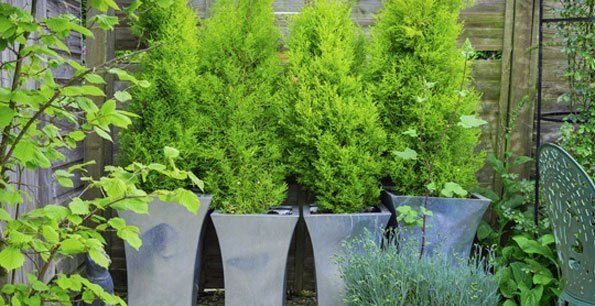

Temperature
This plant does not like frills: in the summer it feels good if the temperature in the room does not rise above 25 degrees. In winter, he may freeze, but quite a bit - so, up to 13 degrees, no more.
The room with the conference room can often be ventilated, it will be to his benefit - but the pot should not stand in a draft.
If your open balcony is not blown by all the winds, you can rearrange the plant here for the whole summer.
Soil and pot
The coniferous flowerpot loves eco-friendly pots: porcelain, ceramic (glazed), clay.
Coniferous soil is suitable for such a plan: peat + turf soil + sand + universal fertilizer (any purchased) + nitrophoska (about 200 g of this substance goes to one plant). In short, the soil for juniper should be light and nutritious.
By the way, there is also a special soil for conifers on sale, this is how a package with it might look like:
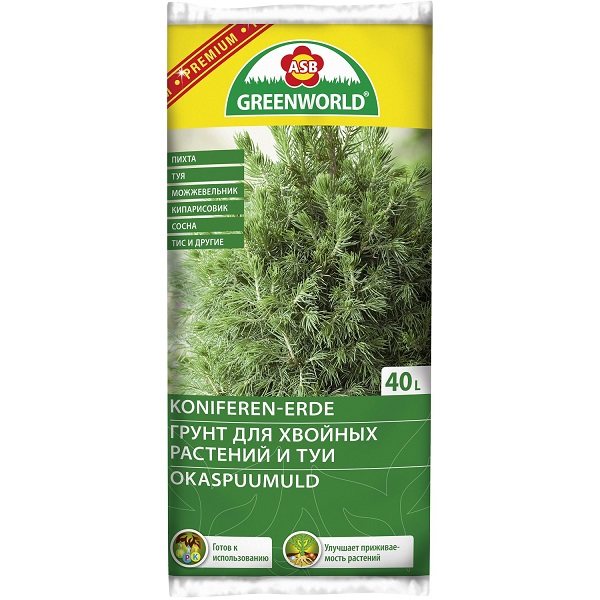

And don't forget about drainage!
Your landing steps:
- Place drainage and soil in the pot.
- Form the deepest and widest possible hole in the pot.
- Transfer the plant here without shaking off the soil adhering to the roots.
- Holding the conifer over the hole, start filling in the soil. When the whole hole is filled with earth, and this soil will hide the roots of the plant, press it down a little (just a little).
- In the end, you can mulch the planted conifer with peat or humus. But personally, I like mulch more with small pieces of pine bark - it will not let the soil dry out prematurely, and it looks beautiful.
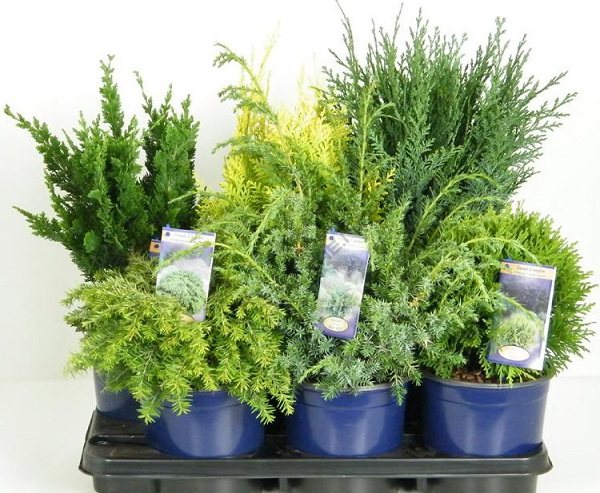

Landing in open ground
Planting a juniper in open ground requires adherence to all the nuances - the correct choice of time and place of planting, soil and planting material.
Boarding time
The most best disembarkation time
juniper in open ground - early spring.
Moreover, you do not need to wait for warm weather, the plant can be planted immediately after the snow thaws.
In a later spring period, young growth can also be planted, but there is a danger
burning needles.
When planting a juniper
in the autumn, there is a possibility that the plant will not have time to take root and acclimatize.
A plant purchased with a closed root system can be planted Anytime
even in the hot summer months. True, shading is required from the rays of the sun in the daytime.
Seat selection
Juniper grows well only in open, sunny places. Sunlight access it should be
during the whole day. Some shading is allowed only when growing common juniper, but also to a small extent.
From lighting intensity
the decorativeness of plants, the density of branches and needles depends. In a juniper growing in the shade, the branches will grow little, they will be randomly, forming a shapeless loose mass. The variegated needles will lose their original color scheme.
Soil for planting
Soil reaction
depends on the type of plant. Alkaline is necessary for ordinary, Central Asian and Cossack junipers. To obtain such a reaction, dolomite flour or slaked lime is introduced into the soil.
The rest of the species prefer sour reaction
... This is achieved by introducing peat and sand into the soil, mulching using wood chips and peat.
Siberian juniper
requires sandy and sandy loam soil, Virginia - clay soil, into which it is desirable to add compost.
Into the landing pit
you need to add drainage from broken brick, large pebbles and sand. The thickness of the drainage layer is about 15-25 cm.
Planting material
The best thing
plant young plants growing in containers up to 5 liters. They are easier to plant and take root. Especially if
the root system is closed
(i.e. the plant is placed in the ground along with a clod of earth).
For planting large plants
some experience and skill is needed. Such seedlings are grown in the ground, before being sold, they are dug up, wrapped in burlap or placed in special containers and plastic bags.
Adult plants to plant Not recommended
absolutely. This is due to the peculiarity of the root system, which is pivotal and goes deep into the soil. It is almost impossible to dig up a specimen without damaging the main root. This will lead to the almost inevitable death of the plant.
Try to plant
an adult juniper is possible only in winter, with a frozen soil coma. It is noticed that the closer to spring the planting is carried out, the more likely the plant will survive.
Before planting specimens in a pit, they are prepared, abundantly wetting a clod of earth
2 hours before landing.
How to plant a juniper correctly?
For planting
you need to dig a hole. Its size depends on the size of the seedling. For young junipers, the pit is made square meter by meter. They dig deep about half a meter. In any case, the pit is made in
2-3 times
larger than a soil coma.
The bottom of the pit is lined with a drainage layer. The rest of the space is filled with cultivated soil suitable for each type of juniper. The plant is placed in a pit, taking care not to damage the soil ball and roots. In young seedlings, the root collar should be located at the very surface of the soil, in adult plants it should rise by 6-12 cm
.
After planting, the plant is watered with plenty of water. The trunk circle is mulched
various materials - peat, pine bark, wood chips, sawdust, crushed cones, pine nut shells. The layer thickness should be
5-10 cm
.
If several specimens are planted at once, the correct distance between them should be observed. In small species, it should be at least half a meter. High and spreading - from 1.5 to 2.5 m
.
Planting juniper from the forest
Subject to the rules, such a landing is quite possible.In some cases even more reliable, as you choose planting material
.
You need to transplant
small young plants that still have a small root system. When you find such a tree, mark the sunny side before digging it up. Plant the same side at home.
The seedling is dug together with a lump of soil
, immediately placed in a polyethylene film or burlap, tightly wrapped and tied.
Plant in the garden as well as purchased material.
Planting bush species
You can plant such a juniper before it grows in breadth and depth. The root system of mature shrubs is strongly intertwined and grows downward, deep underground. therefore planted only
young specimens that have not reached the age of two.
Growing conditions and care
The plant loves light, so you shouldn't hide it in the shade. It should be close to windows. In the summer, you can take the juniper outside, but in the winter, a room where there is no heating is ideal for a plant. It easily tolerates low temperatures.
Juniper is adversely affected by heat, dry air and dust. For this reason, spraying should be carried out every day. In order for the plant to develop well, the necessary conditions must be created for it. This is the care of him. Despite the fact that the juniper loves light, you need to choose a place for it, where there is no prolonged sunlight.
In summer, you also need to monitor the temperature. It should not rise above 20 degrees. Periodic outdoor exposure is of great benefit to the plant, so it is recommended to take it out into the air.
In winter, a loggia or balcony for development is ideal for a juniper. After all, it is in such rooms that the temperature is usually kept low. But we must not forget that the plant is placed near the light. In this period
watering
should be shortened.
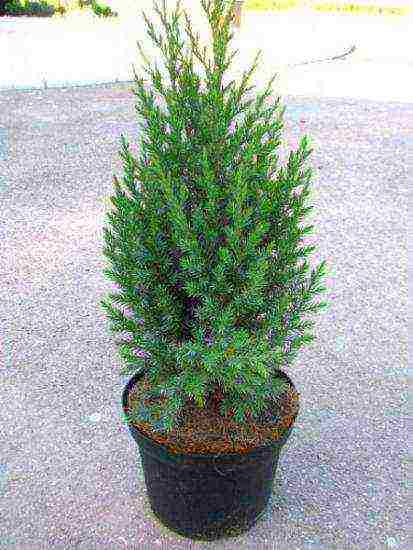

The juniper has some enemies, including:
- caterpillars
- spider mites
- mealybugs
- rust appearance
Therefore, you need to systematically monitor the condition of the plant, provide timely assistance. Indoor juniper should be fed periodically. It is best to use organic fertilizers. Humus is ideal for this. It is rarely allowed to apply mineral fertilizers, but you should not add a lot of them. The plant should be fed in small quantities in the summer.
Propagation by cuttings
Ornamental junipers can of course be purchased from a specialist store. However, such plants are not always available for sale. Therefore, many indoor crop lovers simply grow juniper from a cuttings taken from a bush in the country or in the forest. It is not difficult to get an adult plant using such planting material.
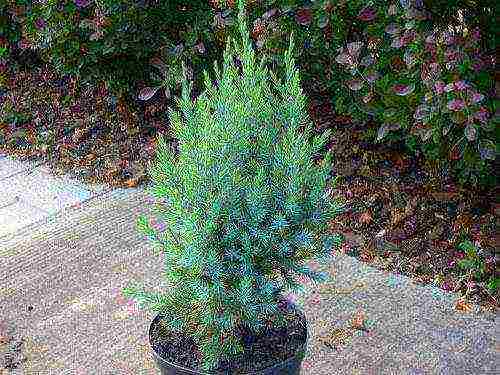

Cuttings for cultivation should be taken only from a young bush (at the age of 4-5 years). You cannot cut a branch for planting with a knife. Otherwise, the plant will not be accepted. The stalk should be broken off together with the "heel". The latter needs to be cleaned from the bark in the future. Before planting from the handle, you should also cut the lower needles with scissors.
The twig prepared in this way must be placed in a pot with a nutritious substrate. As the latter, ordinary moistened garden soil mixed with river sand is perfect. The cutting should be placed in the substrate at an angle of about 35 degrees. In order for the twig to sprout roots and begin to develop, you need to put a plastic bag on the top of the pot, thus arranging a "greenhouse". It is not recommended to water the cutting in the future. Before rooting (30-45 days), it should only be sprayed.
Sometimes twigs planted in this way are not accepted. Therefore, for fidelity, you can take several cuttings at once. In this case, instead of a pot, you should use a box or simple plastic cups.
